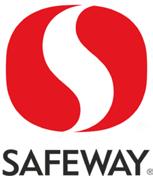CALIFORNIA GROCERS ASSOCIATION

Tariffs Create Uncertainty for Ethnic Food Markets
PAGE 16
High Agency: The Answer for Volatile Times
PAGE 22
Know The Enemy. Know Yourself. Fear Not.
PAGE 8
Can grocers do more to embrace AI solutions?
PAGE 28


Tariffs Create Uncertainty for Ethnic Food Markets
PAGE 16
High Agency: The Answer for Volatile Times
PAGE 22
Know The Enemy. Know Yourself. Fear Not.
PAGE 8
Can grocers do more to embrace AI solutions?
PAGE 28



PEPSI, the Pepsi Globe and FOOD DESERVES PEPSI are trademarks of PepsiCo, Inc.
EXECUTIVE COMMITTEE
Chair Michel LeClerc
North State Grocery, Inc.
Immediate Past Chair
Lynn Melillo
Bristol Farms
CHAIR APPOINTMENTS
Independent Operators Committee Chair
DIRECTORS
Joe Mueller Kellanova
Elliott Stone Mollie Stone’s Markets
Ryan Adams
Gelson’s Markets
HeeSook Alden
Certified Federal Credit Union
Joe Angulo
Chedraui USA, Inc.
Steve Brancamp
United Natural Foods, Inc.
Elaina Budge
Costco Wholesale
Rocky Campbell C & K Market, Inc.
Dorothy Carlow Mother’s Market & Kitchen
Chris Dehoff
Dehoff’s Key Market
Jon Giannini
Nutricion Fundamental, Inc.
CALIFORNIA GROCERS ASSOCIATION
President/CEO
Ronald Fong
Senior Vice President &
Chief Operating Officer
Doug Scholz
Vice President
Government Relations
Daniel Conway
Executive Director
Events & Sponsorship
Beth Wright
Vice President
Communications & Public Affairs
Nate Rose
Director
State Government Relations
Leticia Garcia
First Vice Chair
Richard Wardwell
Superior Grocers
Second Vice Chair
Jonson Chen
Tawa Supermarket, Inc.
Subriana Pierce C.A. Fortune
Sergio Gonzalez
Northgate Gonzalez Markets
Justin Hyer
Molson Coors Beverage Co.
Tyler Kidd
Mar-Val Food Stores, Inc.
Nick Malm
Reyes Coca-Cola Bottling LLC
Brady Matoian
OK Produce
Brendan McAbee
Bimbo Bakeries USA
Kelli McGannon
King Soopers
JR Medina
Super A Foods, Inc.
Candace Minto
PepsiCo Beverages
North America
Director
Local Government Relations
Tim James
Director CGA Educational
Foundation
Brianne Page
Vice President
People Operations & Administration
Jennifer Gold
Senior Manager
Marketing & Membership
Sunny Porter
Communications
Manager
Grace Becker
Senior Manager
Business Development
Bailey Dayen
Treasurer Pamela Burke Grocery Outlet, Inc.
Secretary Bertha Luna Stater Bros. Markets
Karl Schroeder Albertsons Companies
Michael Molinar
PAQ Inc.
Suzy Monford
Heritage Grocers Group
Andrew Knight Instacart
Tim Nowell
Procter & Gamble
Brenda Palomino
Amazon
Bethany Pautsch
Tyson Foods, Inc.
Eric Pearlman
C&S Wholesale Grocers
Brian Pohl
Classic Wines of California
Chris Richmond
Post Consumer Brands
Controller
Scott Inman
Executive Assistant & Board Relations Specialist
Delaney Faulkner
Senior Accountant & Assistant Office Manager
William Quenga
Administration & Programs
Coordinator
De’Brae Gaines
California Grocer is the official publication of the California Grocers Association.
1005 12th Street, Suite 200 Sacramento, CA 95814
(916) 448-3545
(916) 448-2793 Fax cagrocers.com
Nick Sass
The Hershey Company
Casey Scharetg Gallo
Greg Sheldon
Anheuser-Busch InBev
Diane Snyder Whole Foods Market
Chang So Hollister Super, Inc.
Brad Thomas
Kimberly-Clark Corporation
Joe Toscano
Nestle Purina PetCare
Kevin Young Young’s Payless Market IGA
For association members, subscription is included in membership dues. Subscription rate for non-members is $150.
© 2025 California Grocers Association
Publisher Ronald Fong
rfong@cagrocers.com
Editor Nate Rose
nrose@cagrocers.com
Managing Editor Grace Becker
gbecker@cagrocers.com
For advertising information contact: Bailey Dayen bdayen@cagrocers.com




From dairy products to crinkle-cut fries —to coffee and everything in between, Best Yet provides an expanded assortment of household staples with a fresh look, trusted quality and unbeatable prices.
For more than 125 years, Best Yet has provided affordable products throughout the entire store, all guaranteed to meet your highest expectations. It’s our promise to you.



RON FONG PRESIDENT AND CEO
CALIFORNIA GROCERS ASSOCIATION
In this issue we aim to arm you with ideas and strategies for navigating uncertain times
I recently had a colleague ask me about an old sweatshirt I sometimes wear, which commemorates the famous swim to Alcatraz that takes place in the San Francisco Bay. My colleague wanted to know if I’d ever done the swim, to which I responded with laughter, “No! I’m not crazy.” But I do admire the heck out of those brave and tough (and possibly insane) enough to try.
When we look at this particular period of history, it seems likely to be deemed a time of intense uncertainty. The financial markets have suffered multiple collapses before rocketing up again only days later. We’ve had on-again, off-again tariffs. The news cycle feels faster than ever as stories pop and then deflate within a mere handful of hours. Opportunities for misadventure abound.
This is the zeitgeist we decided to tap into for our second magazine issue of the year, and in these pages you’ll find ideas and inspiration to help you navigate dangerous currents and choppy waters.
Thinking back to the idea of swimming to Alcatraz, I imagine one of the hardest parts would be simply beginning. Uncertainty is paralyzing. Yet, one of this issue’s features urges you to plunge in headfirst regardless of the conditions—including a very fun prison break scenario that I could imagine more than a few past board chairs being especially adept at solving.
If tariffs keep you up at night, Kevin Coupe is on hand to help you channel the wisdom of Sun Tzu into a strategy to deal with the various potentialities. We also explore how tariffs threaten to disrupt California’s unique and dynamic ethnic grocery ecosystem.
Beyond tariffs, the other factor dominating the headlines is artificial intelligence. It’s hard to have a conversation about the industry these days without AI being brought up. While we’re all trying to project what it will mean for our businesses, an interesting question to consider is what types of employees you’ll need on your teams to
thrive in the era of AI. It’s likely the skillsets we look for and innate characteristics will need updating as we build out our teams in the future.
There’s a famous metaphor former Gov. Jerry Brown used to share to explain his political philosophy. In it, the Governor imagined himself paddling a canoe forward. A little bit to the left; a little bit to the right. He concluded that was the way to propel yourself forward because paddling only one direction will only turn the boat in circles. In these uncertain times it can feel like we’re all paddling out to Alcatraz on a stormy day in the San Francisco Bay. To remain successful we must remember the one big thing we all know—how to operate fantastic grocery stores—while maintaining the strategic agility to shift with the currents. If there’s any industry built to handle such an environment, I’m confident it’s this one. ■
MICHEL LECLERC NORTH STATE GROCERY, INC.
I can’t help but notice one word dominating political conversation in California: affordability.
Customers are worried about it, and legislators can’t seem to stop talking about it. While there’s been a lot of noise on the topic from lawmakers, at this point it looks to be all talk.
Following the November presidential election, the Public Policy Institute of California found in its February Californians and Their Government survey that, “about half of Californians name the cost of living and inflation, housing costs and availability, and the environment as the most important issues for the governor and legislature to work on in 2025.” As a grocer, this concern is certainly something I’ve seen reflected in our shoppers.
Despite early commitments from legislative leaders to tackle affordability head-on this session, so far we’ve only seen proposed legislation that would increase operating costs for grocers and drive up grocery prices.
Two bills that come to mind are aimed at shopping cart retrieval and self-checkout regulations. While the industry assumes a familiar defensive role at the Capitol, CGA has also remained proactive throughout the session. To help offset costs for grocers, and therefore customers, CGA sponsored a bill taking aim at swipe fees. Authored by Asm. Liz Ortega, AB 1065 would have eliminated swipe fees on sales tax and tips, resulting in about $3 billion in savings for California businesses, and leading to lower costs for consumers.

Unfortunately, despite promises to address affordability, the bill was stalled this year. It will be reconsidered next year.

I was proud to support these efforts alongside members of the business community by speaking at the bill’s press conference. I focused my remarks on sharing how hidden swipe fees are unfair to both business and customers and explaining how this bill would help California flourish.
This spring the industry came together to use its collective voice at the Capitol during CGA’s annual advocacy event, Grocers Day at the Capitol. Together, we participated in more than 40 meetings with lawmakers, educating them on how harmful proposals— from surveillance pricing to shopping cart regulations—threaten affordability and impact prices on store shelves. I also enjoyed moderating onstage discussions with Asm. Heath Flora and Asm. Liz Ortega about the legislative landscape California businesses must navigate. It was a productive day for the industry where we continued to educate legislators on the connection
between proposed regulations and the real, unintended consequences for Californians and businesses.
The following day, CGA’s Executive Committee had the opportunity to meet privately with Governor Gavin Newsom. Reminding us that he himself is a business owner, the Governor was receptive to the challenges we outlined. This was an encouraging signal from state leadership, and I hope to see it materialize as the session progresses.
To round out a busy spring, I had the pleasure of welcoming the CGA team to North State’s Holiday Market in Auburn for a store tour and team lunch. It was a great opportunity to share our company’s core values, upcoming growth plans, and unique employee-owned structure. As we head into summer, I’m energized by the momentum we’ve built—both in our stores and at the Capitol—and look forward to continuing our work on behalf of California’s grocery community this summer. ■


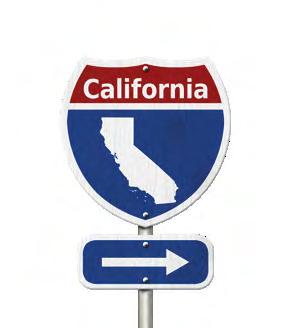

Stay on the cutting edge of California’s grocery industry with insights, knowledge, and skills.
Collaborate with trade partners to develop strategies that impact your bottom line and accelerate your business into the future.
KEVIN COUPE FOUNDER MORNINGNEWSBEAT.COM
I want to talk about tariffs.
Not really. At least, not to the extent that I will address them with any kind of policy specificity. Print media deadlines being what they are, I have no idea what the nation’s tariff situation will be as you read this. (Hell, I don’t even know what the nation’s tariff status will be ten minutes after I send this column to my editors.)
There are, however, two points I would like to make, one short-term and one long-term.
Short-term: I’ve believed since election season, when then-candidate Donald Trump made tariffs a centerpiece of his economic policy platform, that it was incumbent on retailers to do a deep audit into the products they sell, the ingredients they use, and the equipment that they have in-store and on-order to at least figure out what their vulnerabilities are.
In “The Art of War,” Sun Tzu wrote, “If you know the enemy and know yourself, you need not fear the result of a hundred battles. If you know yourself but not the enemy, for every victory gained you will also suffer a defeat. If you know neither the enemy nor yourself, you will succumb in every battle.”
I know from talking to retailers all over the country, in and out of the food business, that sometimes they’d like to be fighting only a hundred battles. Often, it feels like a lot more
than that, but Sun Tzu’s advice strikes me as appropriate to the moment.
Long-term, I think that both the challenges and opportunities are greater and can redefine the relationship between retailers and their shoppers and even their stakeholders.
The opportunity is to open new and effective lines of communication with shoppers, enabling a dialogue that can translate into lifetime customer value.
To be clear, I am not suggesting that businesses get into pitched political battles that they cannot win. But I do believe that it is incumbent on retailers to be honest with their shoppers as they can about how tariffs can result in inflation, which means higher prices.
I always advocate being honest with shoppers. It is, in fact, the best policy. Besides, the alternative is dishonesty. And that’s not really an alternative at all—
especially because retailers, by embracing the opportunity to control the narrative, can shape how customers feel about their store and where they do their shopping.
You should not assume that every place that shoppers get their news is dependable—you need to be the dependable source of food related information, at least to the best of your ability.
I’ve frequently pointed to Stew Leonard’s, the Connecticut-based retailer, as an example of effective communication. (I know this intimately. I’ve been shopping at Stew’s at least once a week for 40+ years. I did the math and can say both assuredly and conservatively that I have spent well over $350,000 there—which is as good a definition as any of “lifetime customer value.”)
Stew Leonard, Jr., sends out a regular “Around the Store with Stew” e-newsletter in which he talks about these issues. In his most recent edition, Leonard wrote about tariffs: “Right now, we are holding our prices. There haven’t been any price increases at Stew Leonard’s due to tariffs. Many suppliers bought in extra product pre-tariff. We’re hoping we can hold things off for a month or two … There are some bright spots. Our two big items are imported salmon from Canada and avocados from Mexico.
Both are ‘non-tariffed’ due to our USMCA agreement. The cost of bananas and pineapples went up because of the tariffs, but we’re splitting the increases with our suppliers so that our shoppers aren’t feeling the pinch.
“You’ll see some great prices on lobsters this summer. Canada imposed tariffs on China in January this year. China exports roughly 80 million lbs. of lobster annually. This excess supply drives the prices down for us here in the US. Lobster season in Maine starts soon so get your lobster bibs ready.
“Wines and spirits from Europe are another story. Many of our importers bought extra shipments ‘pre-tariff’ and we haven’t seen any tariff-imposed price increases…yet. Some of our suppliers and distributors have said they’ll see some prices go up on a few brands in June, BUT they’ll roll the prices back again if there are any policy changes.”
There is an independent wine shop in Cincinnati, Hart & Cru, that essentially took the same approach with its shoppers.
In an email to customers that also was posted on its website, owner Kevin Hart (not the comedian) wrote about how expected tariffs would touch “the lives of the growers, importers, and communities that make our work possible. Many hard conversations are being had—here stateside within our ecosystem, and abroad with our friends— as we all try to navigate how best to move forward with a great deal of uncertainty still to sort through … We’re a small shop in Ohio with a big love for Europe. The wines we bring in are the result of generations of passion and tradition. We work with thoughtful importers who support growers farming by hand, not conglomerates with marketing budgets. These tariffs fall hardest
A bottle that was $30 may now rise to around $37 … A bottle once priced at $50 could now land closer to $60.
“It’s important to note—these aren’t acrossthe-board increases. Some importers and wineries may tighten margins to help shoulder the burden. Others may not be in a position to do so. But for us, as an independent shop with slim margins, we simply can’t absorb it all … We weathered similar tariffs in 2019. It was hard, but we learned, adapted, and leaned on the strength of our community. We’ll do the same again. Our promise remains unchanged: to seek out wines of integrity and soul, made by people who care, and get them into your hands with honesty and heart.”
The communication is honest. Transparent. Heartfelt. Realistic.
In the same way that Stew Leonard’s was.
Taking this approach clearly makes the point that Stew Leonard’s is acting as an advocate for the shopper, not just a sales agent for the supplier. The message is that Stew’s will try to hold down prices, often by working with suppliers, to the best of its ability—but that when prices do go up, it isn’t profit-taking. It is just the result of a trade war.
Stew Leonard’s did the same thing when it came to egg shortages—it explained the problems, talked about possible solutions, laid out the likely scenarios, and even offered alternatives and recipes. (Even when eggs got really expensive, they remained among the least expensive meal solutions in the store— but almost no retailers made that case.)
Consumers, for the most part, are adults. Treat them that way.
on that kind of work—on families, on artisans, on the very wines that make what we do feel meaningful.”
Hart then explained the hard realities:
“When our importers bring in $100,000 worth of wine, they now pay an additional $20,000 in tariffs to release that same shipment from the port. These added costs affect every level—our partners abroad, our importers here, and ultimately, the way we’re able to bring wine to your table.”
And then, the bottom line:
“We’ll do everything we can to protect value for you, but we want to be transparent. Some price increases are unavoidable. Here’s a sense of what that may look like: A bottle that used to be $15 may now be closer to $18 …
I believe that most Stew Leonard’s and Hart & Cru customers will stand by their stores. They may have to make some changes in their purchasing behavior— many will have to buy less. (This is the consequence of a public policy approach that I find to be confounding—though that’s a different column.)
But I suspect that most will remain as loyal to Stew Leonard’s and Hart & Cru as these retailers clearly are trying to be to their suppliers and customers.
Some retailers are afraid of having these frank conversations with shoppers, especially in the public square. But keep in mind Sun Tzu’s admonition:
“If you know the enemy and know yourself, you need not fear… ” ■
JENNIFER HATCHER CHIEF PUBLIC POLICY OFFICER AND SVP, GOVERNMENT AND MEMBER RELATIONS, FOOD MARKETING INSTITUTE
Over the past five years, U.S. shoppers have faced major disruptions—from the COVID-19 pandemic and its lifestyle upheavals to rising prices driven by inflation and supply chain issues.
Despite these challenges, American consumers continue to enjoy grocery shopping and have kept their purchasing habits remarkably consistent.
FMI recently released our U.S. Grocery Shopper Trends: The Logic of Food Shopping report (https://www.fmi.org/ our-research/research-reports/u-s-groceryshopper-trends)—for 50 years, FMI has prioritized this consumer research—and it kicks off our 2025 series offering timely insights into grocery shopping behaviors and shoppers’ logic behind food budgets and shopping decisions.
We found that despite several years of economic uncertainty, shoppers’ attitudes and habits around grocery shopping have remained stable. To better understand this dynamic, we further explored shopper aspirations to “eat well,” an outlook that forms the foundation for how shoppers think about value and shapes their choices about which foods to buy, how to cook and where to shop. While every shopper has their own definition, “eating well” encompasses the needs, desires and values that guide shoppers’
decisions about what to buy, where to shop, and whether something is worth its cost.
For today’s grocery shoppers, value is more than just the numbers at the bottom of a receipt. Price and quantity matter, but they go beyond these considerations. Shoppers also determine value in terms of attributes such as quality, freshness, health, nutrition, and ethics.
They weigh how well products align with their personal preferences, needs, and habits. Shoppers consider their own and their household’s desires for pleasure,
novelty, variety, and positive shopping experiences. And they balance these against convenience in both the products they use and in their shopping.
Despite the economic pressures they face, consumers overwhelmingly tell us they enjoy grocery shopping and that they are willing and able to budget in order to “eat well” based on their specific values and needs. In fact, our U.S. Grocery Shopper Sentiment Index is currently holding steady at 72 out of 100. While individual needs vary, by and large, most shoppers prioritize four things when shopping for food: health, entertainment, exploration, and convenience. Satisfying these key needs are important to shoppers, and they tailor their overall budgets and food spending behaviors to ensure they “eat well.”
Still, several factors are weighing on consumers. Most Americans (70%) say they are extremely or very worried about rising grocery prices, and 78% said they are at least somewhat concerned about the impact of tariffs on the cost of imported food and ingredients.
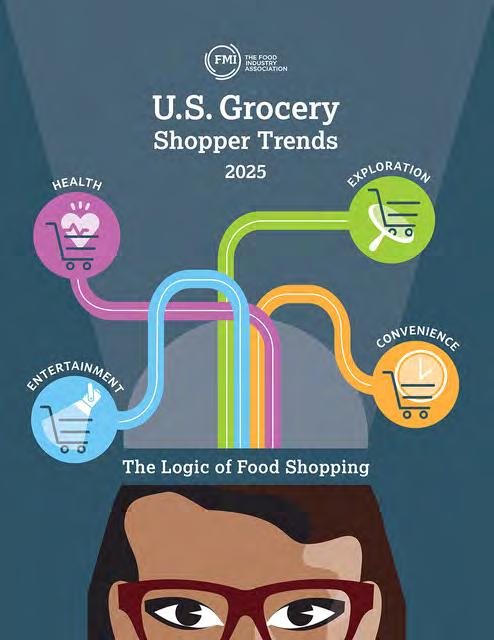
The analysis revealed a silver lining: most consumers (75%) report feeling in control over their grocery spending. However, that confidence has declined in recent months, as 85% of consumers expressed confidence in control over their food spending in September 2024. In response, shoppers report using various strategies to stretch their food budget further. Traditional methods like list-making (83%), taking household inventory (79%), meal planning (69%), and seeking out coupons or discounts (60%) remain the most common.
Shoppers try to stay committed to their goal, even if some have to make deeper compromises in response to their economic circumstances. For brands and retailers, these findings represent potential strategies for positioning food and beverages in ways that resonate more deeply with shoppers’ values, help them feel more at ease about their spending and offer them opportunities to shift their budgets to food and household expenses.
Understanding what “eating well” means to shoppers is essential for food retailers and manufacturers to understand how shoppers optimize their food spending and how they prioritize food within their larger set of expenses, especially in a time of mounting economic uncertainty and challenge. ■
To download the U.S. Grocery Shopper Trends 2025: The Logic of Food Shopping report, visit www.fmi.org/grocerytrends.








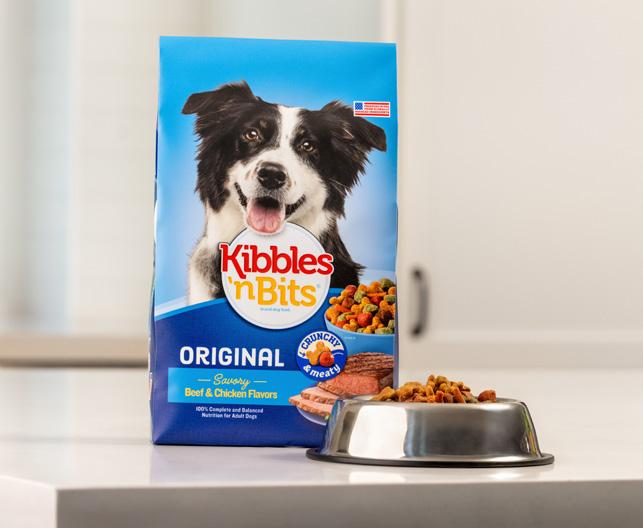

GREG FERRARA PRESIDENT AND CEO NATIONAL GROCERS ASSOCIATION
The independent supermarket industry is navigating a retail landscape that looks dramatically different than it did just a decade ago.
While the fundamentals of great service and local commitment remain as important as ever, evolving customer expectations and technology trends are reshaping the playing field and opening up new opportunities for independents to compete in fresh, compelling ways.
One area of transformation is digital engagement. Social media has already changed the way grocers connect with their shoppers, but it’s evolving beyond simple posts and promotions. Increasingly, customer relationships are being defined through real-time interactions, personalized messaging, and mobile-first experiences. Consumers now expect grocers to meet them where they are; i.e., on their phones, in their inboxes, and across their digital routines. Independents who invest in strong digital communication, whether through wellmanaged social media accounts, loyalty apps, or responsive customer service platforms, can create this kind of authentic engagement. Independent grocers also have an edge when it comes to creating a sense of place and belonging. As national chains lean heavily on automation and uniformity, local retailers can stand out by turning their stores into community destinations, where they serve
at the heart of the community. Whether it’s offering a coffee bar, partnering with local banks, or providing free Wi-Fi and seating areas, there’s real potential to reimagine the grocery store as a gathering space. Instore staff who offer cooking tips, nutrition advice, or product recommendations further personalize the experience.
Consumer demand for cultural and ethnic diversity in food choices is another trend that continues to gain momentum. A rising number of shoppers are looking for products that reflect their heritage, preferences, or dietary needs. Independents are uniquely positioned to respond quickly, adapting product assortments and services to meet the needs of their specific communities. Hiring multilingual staff, offering signage in multiple languages, and tailoring promotions to reflect cultural celebrations all demonstrate attentiveness and build customer trust.
On the operations side, technology is becoming more accessible and affordable for independent grocers. From modern point-of-sale systems and online ordering platforms to tools that track inventory and consumer preferences, today’s solutions are designed to be scalable. These systems help
grocers streamline processes, reduce waste, and make better decisions based on data and analytics.
In recent years, many large U.S. cities saw population declines, as residents sought more space, lower costs, and remote work flexibility in suburbs or smaller towns. However, recent data suggests that urban areas are once again on the rise. According to the U.S. Census Bureau’s 2023 population estimates, several major metro areas, including New York, Los Angeles, and Washington, D.C., experienced population gains after previous declines during the pandemic. Looking ahead, the trend toward urbanization is opening the door for smaller, more flexible store formats. Independents can thrive in these spaces by opening compact stores in repurposed buildings, offering curated assortments, and incorporating frictionless shopping tools.
Ultimately, the future for independent grocers will be defined by how well they blend high-touch service with smart use of technology. Those who embrace innovation while staying rooted in the needs of their local communities will be well-positioned to succeed in a fast-changing food retail environment. ■











LOUIE BROWN
Each legislative session in Sacramento tends to follow a few dominant themes. In 2023, it was a “hot labor summer,” with proposals ranging from expanded sick leave to unemployment benefits for striking workers.
Brown
In 2024, state lawmakers turned their attention to artificial intelligence and retail theft.
So, when the Speaker of the Assembly tasked his chamber in December with making California more affordable, the business community had reason to hope. But five months and thousands of bills later—amid a multibillion-dollar budget deficit—the Legislature has yet to deliver meaningful results
The State Senate seems to be working off an entirely different agenda, introducing a host of bills that will directly increase the cost of groceries by attacking the grocery industry. SB 442 dealing with self-checkout stations increases labor costs and liability, thereby increasing grocery prices. SB 735 would allow local governments to charge grocers to return stolen grocery carts, increasing costs. And SB 22, the gift card repeat bill, which would increase the cash out limit for gift cards from $10 to $25. All three bills work directly against the stated message of making California more affordable.
Meanwhile, the state’s cost-of-living crisis continues to worsen, and the impacts are being felt around the dinner table.
According to the U.S. Bureau of Labor Statistics, grocery prices in California rose nearly 23% between 2020 and 2024, outpacing national inflation. Staples like eggs, dairy, meat, and fresh produce have become substantially more expensive. Food is now the third-largest household expense, and Californians spend more on groceries each week than nearly every other state. Even middle-income families are making difficult trade-offs between food, gas, rent, and utilities.
Despite this, the Legislature has shown little urgency. Instead of tackling the core issues, lawmakers have diverted attention. The Assembly’s so-called “affordability package” has led to the creation of four new subcommittees to “study the issue,” as though more reports might suddenly reveal the solution. The few proposals that have surfaced, such as boosting job training, improving wage collection, and investigating alternative protein innovation, fail to address the root of the affordability crisis. Democratic leaders insist that good policy takes time, with the Senate Pro Tem affirming his “do it right, not fast” approach. But for millions of struggling Californians, relief cannot come soon enough.
In the meantime, the blame has been conveniently shifted to Washington. In his latest budget proposal, Governor Newsom pinned California’s affordability crisis on what he calls the “Trump Slump,” suggesting the state’s soaring housing, energy, gas, and food costs stem from federal tariffs and policies—not Sacramento’s own regulations. Several state lawmakers have echoed that narrative, issuing statements decrying federal actions and filing lawsuits to block tariffs.
Yet critics argue this is a distraction. Nonprofits and policy groups have urged state leaders to stop pointing fingers and start taking responsibility—by reining in excessive regulations and rejecting harmful legislation before it worsens the situation.
With the 2025 legislative session in full swing, pressure is mounting for lawmakers to act. Voters and advocacy groups are demanding real solutions: cost controls, support for local grocers, and expanded food access programs, not more platitudes or political theater.
The time for study is over. Californians are hungry for action—literally. ■

By Bill Romanelli
First there was the threat of tariffs. Then a 10% tariff across the board went into effect, followed by the promise of larger “reciprocal” tariffs that were slated to kick in at the start of April, ranging from 17% to a jaw-dropping 145%.
And then, just as it looked like a full-on trade war was about to explode, there came a reprieve. Everything was put on pause for 90 days.
As of this writing, the 90 days is about half over and so far, other than the United States’ existing trade agreements with Canada and Mexico— and a newly forged agreement with the UK—no new deals have been announced. The collective world is holding its breath to see what happens. Here at home however, the worst of the hypoxia is being felt by the nation’s ethnic food markets, which are trying to navigate what an article from Doing Business in Bentonville described as “one of the toughest retail environments in recent memory.”
“There’s even more uncertainty in that some experts believe the 90 days may not hold for all countries, meaning some tariffs could kick in any time,” says Bobby Gibbs, a partner at Oliver Wyman, a strategy consulting firm serving the retail and consumer goods industries.
The result is there is nothing predictable about the costs of imported goods, which is putting California’s

ethnic food markets— already facing tight margins—in an increasingly tighter bind. Our state ranks first in the nation for ethnic grocery stores per capita, according to Grocery-Stores.org, and boasts the highest number of Asian grocery stores—undeniably the hardest hit by tariffs—at 649 locations (nearly double that of New York, according to Rentech Digital). That means their ability to adapt in this fluid environment will have enormous impacts—not only on their own operations, but on California’s diverse grocery market and ethnic populations as a whole.
So far, these markets are proving resilient, employing a combination of tactics around sourcing, pricing, stockpiling and consumer education to help their customers get the value they expect and retain a sense of “home” even as they change their buying habits.
Even so, barring any new trade agreements, the real challenges and the toughest choice may still lie ahead.
Continued on page 18 ▶
Asian countries are likely to be saddled with the highest tariffs. With a 10% tariff already in effect, the Trump Administration is proposing steeper tariffs, ranging from 17% for the Philippines to 25% for South Korea, 26% for India, 29% for Pakistan, 37% for Bangladesh, 44% for Sri Lanka, 46% for Vietnam, 49% for Cambodia and anywhere from 54% to 145% for China.
The biggest price jumps would be in seafood products and dry goods, along with rice and certain spices—which cannot be grown anywhere else due to climate and soil conditions.
Given that the U.S. imports up to 85% of its seafood, according to The National Oceanic and Atmospheric Administration, implications for major Asian retailers like 99 Ranch Market, H Mart, and others are substantial.

On the other hand, while raising prices may not drive customers to another location, many of them fit into the “low-income” category, and have little choice other than to buy less.
Steven Durlaff, with the University of Chicago Stone Center for Research on Wealth Inequality described the tariffs impacts as a “regressive tax” to the Associated Press, emphasizing that the price hikes would disproportionately impact lower income populations, who tend to have little or no discretionary income.
“We’ve already had increasing costs in overhead (labor, energy, credit card fees) that all impact our margins,”
“For someone who shops at a place like 99 Ranch, which is mostly Chinese product, you just went from a medium-priced store to a Whole Foods price level,” says Nicholas Tran, co-owner of Vien Dong Supermarket in San Diego. “Customers may pivot from that quickly, but it’s going to be difficult for a massive retailer with 100 stores to shift away from that, even with their massive buying power.”
At the local level, the threat is a true Catch-22. On the one hand, local independent stores, which are typically a hub for their surrounding ethnic communities, can’t absorb the higher prices, they have to pass them on.
“We’ve already had increasing costs in overhead (labor, energy, credit card fees) that all impact our margins,” says Guadalupe Lopez with Arteaga’s Food Center, which operates nine locations in northern California, serving a primarily Hispanic customer base. “People also don’t realize many of the supplies stores need, from grocery bags to office supplies, also come from overseas, and are subject to tariffs. It all cuts into our margins.”
The net result of the Catch-22 is less income for the smaller grocery stores, which may shrink the margins more than these stores can bear.
“We always say grocery store margins are low, and the ones that are struggling now will probably struggle even more,” Gibbs says. “For the companies operating on the smallest margins, this could tip them over.”
If Gibbs is correct, the repercussions from closures of ethnic martes will ripple out in two directions. The first would create more “food deserts,” defined as areas where local populations have little or no access to fresh and nutritious food items. That tends to drive consumers to more fast-food options, which can lead to negative long-term physical health impacts for an entire community.
These local ethnic stores are also something of a community treasure, meaning the other, and perhaps more sinister ripple would be the impact on mental health. For thousands of Californians, especially first-generation immigrants and foreign students, ethnic grocery stores are community and cultural gathering places that provide a sense of home, tradition, and family.
“We’re not just their grocers, we’re their psychologists, their advisors, their gossip sources” Lopez says. “We know their whole families. We’ve been to their funerals and weddings; we’ve watched their kids grow up.
I’m their family and they’re mine… we take care of each other.”
Tran, from Vien Dong, agrees. “Food is the closest thing to home any of us have,” he says. “Our customers will pick up an item because they recognize the label and say, ‘this is what my mom cooked with.’ Markets like ours play a really important role in helping people have a taste of home through cooking and shared meals.”

Even without the reciprocal tariffs taking effect (yet), store owners are already seeing notable changes in what, how and how often their customers buy.
According to Gibbs, one of the predominant long-term trends that’s actually been emerging for a while—ever since inflation started pushing prices up—is a shift toward value. Consumers aren’t as interested in “paying the least” as they are in “getting the most” for what they pay.
A direct outcome of that is a trend toward “stocking up” as consumers try to save money today, versus spending more for the same product later. Some experts are projecting this could lead to product shortages, but so far grocers aren’t seeing evidence of a real “hoarding mentality.”
“I’m not seeing anyone over-buying, not yet, but my customers are constantly asking me about what price increases might be coming,” says Lopez, who imports about 60% of her products. “I think that’s because they want to make smart purchases as they face concerns about job and food security and affordability.”
Tran has experienced a similar trend, adding that he saw a 15% increase in his sales between April 1-30, mostly in frozen and non-perishable items. As May progressed, his volume crept back down toward normal levels, but a key observation he’s made is that his customers are buying groceries with money they don’t have.
“Perhaps the biggest change I’ve seen is customers buying groceries on credit, as they try to avoid paying higher prices later,” he says. “The danger is sooner or later their credit limits out. If higher tariffs do come down the pike, it’s going to be really hard for people who are already living day to day.”
In the face of these headwinds, ethnic grocery stores are proving to be proactive, innovative, and if nothing else stubborn in their efforts to stretch margins, offer value, and meet customers’ needs.
“At the end of the day, we’re all going to be affected by the willingness of other countries to work together,” Tran says. “How do you strategize for that?”
The answer seems to lie in some new approaches to sourcing, substituting, stockpiling, and pricing which—they hope—will help them weather the storm.
On the sourcing end, the biggest issue is products from China. Tran, who says about 25% of his products are Chinese, has taken to overseeing many buying decisions himself in response to concerns about price gouging from some vendors. His benchmark is 10%, meaning if a vendor is charging a price more than 10% higher than the pre-10%-tariff price, he tells his buyers to put that order on hold while he looks for other options.
It takes a lot of his time, for a job he has people in place to do, but it’s one way he likes to play a direct role in looking out for his customers. Another way he does so is by sourcing similar products from other countries where tariffs—and therefore prices—might be lower.
“The truth is there aren’t a lot of products from China that can’t be found in another country, so you can still offer a product that gives people a taste of home,” he says. “We wondered if customers would think a product from another country was somehow diluting the cultural elements of their cooking, but for most, it’s really about the ingredient, not the label. For most, a lowerpriced substitute product doesn’t have to be better, it just has to be good enough.”
Stockpiling has been another tactical response in anticipation of price spikes, and it can actually offer some small advantage for grocery store owners.
Stockpiling has been another tactical response in anticipation of price spikes, and it can actually offer some small advantage for grocery store owners.
In short, vendors and wholesalers want to buy more product now, ahead of new tariffs, which means they need to move their current inventories and might be willing to make deals.
That said, experts are advising a measure of caution... at least as of May 26, 2025, while the 90-day reprieve continues to offer some breathing room.
“There might be a feeling that you need to do a lot of buying forward to avoid future tariffs, but right now we’re not advising clients to buy forward ‘in volume,’” Gibbs says. “What we’re advising is wait, measure, plan and see. Look for deals and replenish supplies, and if you do buy in increased volume, focus on high-velocity items you deem are not replaceable.”
Another big decision is whether, and how much, to pass price increases on to consumers. Some store operators, like Lopez, are at a competitive disadvantage in that they don’t have the same buying power as the bigger stores, which undercuts their ability to negotiate good deals or even get priority in shipments. Even so, she says she’s in a stronger position than most.
“Many of the smaller stores out there don’t have any choice,” Lopez says. “If they don’t raise prices, their only other options are to cut their workforce, tend their stores themselves—which many already do to preserve what margins they have— reduce their hours, or simply close their doors. Those options are all bad, for all kinds of reasons.”

Could such a tailwind even spur growth? That may be a bridge too far, but if history has been any indicator, growth in the ethnic food market has been the norm, not the exception. The sector has recorded an annual growth rate of 3% since 2019, according to market research firm IBISWorld, and as of April 9, IBISWorld was forecasting revenue for “grocery stores with international brands” would increase to more than $64 billion by 2029—up from $56 billion today.
Another big decision is whether, and how much, to pass price increases on to consumers.
As a case in point here in California, Shun Fat Supermarket, which sells a variety of foods from throughout Asia and Mexico, just announced an expansion into Elk Grove— its 14th location since opening in 1993.
Finally, there may be some offsets from the tariffs themselves.
“The little secret in all of this is that one of the largest portion of any product cost is shipping, and when tariffs go up, the amount of product shipped goes down,” Tran says. “That means lower shipping costs, which does help soften the sting of higher product prices.”
There are in fact grounds for some optimism. Despite all the posturing among the nations, it’s easy to believe no one really wants a trade war that only hurts everyone. There’s still time for deals to get struck and provide some level of predictability in the future.
In the meantime, resourceful store owners are finding ways to diversify their supply chains, and find vendors willing and able to strike reasonable bargains. And in good news for ethnic markets, some of the larger mainstream retailers may also decide the ethnic food market is no longer for them.
“These retailers may hang on to the specialty products some purists insist on using and are willing to pay for, but others will see their price advantage erode, and may step away from ethnic foods altogether,” Gibbs says. “That could actually create a tailwind for ethnic specialty markets.”
Going back to the question of how to strategize for countries’ willingness to work together, the entire trade industry may be stuck on hold for the moment, but at least the music is still playing.
“Most of our clients have yet to make real medium- or long-term decisions,” Gibbs says. “They are certainly looking at diversifying the countries in their supply chains, but as of today, I can’t point to any major shifts. It’s more tactical repositioning on ordering, delaying orders, and looking for operational efficiencies that can help cut costs.”
Of course, the headline fight everyone’s watching is China. Early observers may have predicted China would be difficult, if not impossible to move, but Nicholas Tran thinks China may have the most to lose.
“If tariffs go to 145% for China, that’s basically a trade embargo, and everyone will look for other sources,” he says. “Once vendors switch to a different country they’re unlikely to go back, even if the tariffs magically went back to zero. If I can buy a “good enough” product from somewhere else I will, and I won’t ever need to go back to ordering it from China. Either way, the sooner we resolve this, the better.” ■

HIGH AGENCY: THE ANSWER FOR VOLATILE TIMES HIGH AGENCY: THE ANSWER FOR VOLATILE TIMES
In an era defined by its uncertainty, high agency individuals might be the key to driving outsized results.
By Nate Rose
Imagine yourself in a room. The walls are made of thick concrete. An unpadded, small bed sits in the corner to your left. You stand up and grip the cool steely bars that hold you in your cell. You don’t speak the language; you aren’t even sure how you got here.
A guard approaches and relays to you in broken English that you have one phone call available to you. He leads you to the jail’s phone. Your head flips through the possibilities. Who do you pick up the phone and call?
Whether a friend, family member, or coworker, the person you chose to call is likely the highest agency person you know—or so goes the thinking of George Mack, who recently caused a stir online through his essay on the subject at HighAgency.com and a series of podcast interviews.

For the uninitiated, Wikipedia defines agency as your “independent capability or ability to act on one’s will.” A person described as high agency would be someone with a particularly strong sense for how to get things done. In the scenario above it would be the person in your life who seems especially inclined to be persistent, creative, and persuasive—maybe it’s even the person willing to break the rules to get you out of that third world jail cell.
From President Roosevelt’s famous invocation to “get action” to Shakespeare’s tragedies about human agency, is never far from periods of both great disruption and opportunity, which is why high agency feels so relevant for today’s world.
Continued on page 24 ▶
Longtime grocery industry consultant, writer, and executive Michael Sansolo sees a sea of complexity and existential challenges for the grocery industry when he thinks about where the world could be heading in the next 10 years. Specifically, Sansolo believes GLP-1 drugs and artificial intelligence are two spaces where “we have no idea how big they’re going to impact us.”
That’s because with GLP-1 drugs, the grocery industry expert believes, “We have to recognize, as the food industry, the number one thing, these drugs do, is they lessen people’s appetite.
“And let’s say 50% of Americans are overweight, 30% are on a GLP-1 drug, and those 30% crave 25% fewer calories every day. That’s billions of dollars of sales that the industry is going to lose.”
Similar to GLP-1 drugs’ impacts, artificial intelligence offers the possibility for a different sort of panacea—the world’s information digested, analyzed, and readily available at your fingertips. Sansolo argues artificial intelligence has endless use cases for both consumers and businesses.
“It can help people plan menus,” he says. “It can be used in category management. It can be used in inventory management.
“I think the challenge for, you know, all kinds of operators is: Are they looking into this. Are they considering how it might benefit them. Also, the challenges it would raise. How are we going to adapt.”
If you accept Sansolo’s framework, then the next question becomes what to do about it. Even if you believe the impacts of artificial intelligence or GLP-1 drugs to be overstated, the short-term is also providing plenty of disruptions. From high grocery prices becoming an electoral liability to tariffs and immigration, the industry faces numerous challenges.

When solving a problem, it’s tempting to rely on past success to provide a map for how to move forward. Yet, Sansolo argues the industry’s legacy methods could actually be to its detriment as it faces new territories.
“The industry has done a great job through the decades of procuring products, merchandising products, selling products,” Sansolo says. “We’re entering a new era of retail. The younger population is not suddenly going to decide they want to shop like we used to. The supermarket then has to somehow evolve from being a product supplier to a solution or an idea supplier.”
It’s a difficult proposition for an industry prideful about long tenures and humble beginnings.
“For a lot of retailers and manufacturers—people in the industry— it might not be that you want someone who’s 50 years old and great at merchandising or deal making, or whatever it might be,” says the longtime grocery industry consultant. “There might be people with very different skill sets who can come in and say, what we’re doing is great, but we’re doing it in a way that’s no longer relevant.”
That’s where high agency individuals come into play because they’re the people inside or outside your company most likely to not be beholden to what’s worked in the past but will not translate to the future.
Writer and thinker Nassim Taleb has a famous maxim: “How do you innovate? First, try to get in trouble. I mean serious, but not terminal, trouble.”
Think back to the jailbreak scenario at the beginning of this article and ask yourself whether the person you called would be likely to fit in well and cause few ripples at your company, or whether they would be the type who is constantly disruptive. They’re probably the latter. How many of those types do you currently have on your team?
Does your culture make space for atypical employees?
“It might be that you’re going to have to recruit people who ordinarily, you would say, they don’t really fit,” agrees Sansolo.
“You know, as long as you keep hiring the same kinds of people, you may get incremental improvement.

And frankly, the industry has constantly gotten incremental improvement. But I think, again, we have to look at Amazon and say, those guys are playing completely different games.”
Finding high agency employees and embracing them can be easier said than done within a corporate structure. By definition high agency employees are less agreeable, more likely to challenge assumptions, and, as George Mack writes, the types who will be “mean to you in person and nice behind your back.” It’s safe to say that sort of behavior isn’t always easy to swallow.
There’s a comical meme that Mack uses to illustrate what high agency means in his original essay. It features two individuals stranded on desert islands. One uses gathered sticks and driftwood to spell out “Help” across the desert sand. The other uses the sticks and wood to build a raft, and he is pictured paddling away from the island he was trapped on.
As grocers work to integrate new disruptions like artificial intelligence or GLP-1 drugs into their business plans, they’ll have to increasingly become the archetype that builds the raft to escape instead of searching for the next incremental improvement.
“There is a sense right now, that there’s no normal,” describes Sansolo. “There’s a lot of volatility, which is an opportunity at the same time. Opportunity always comes from people who make what seems difficult work. We have to recognize there is opportunity in all of this. We have to embrace the challenge.” ■

Don Francisco’s ® flavored coffees are crafted with over 150 years of family roasting tradition. The same care we put into selecting the finest beans from around the world goes into creating each tempting flavor.
And now we’re adding some exciting new members to our family of perfectly balanced flavored coffees. Introducing Caramel, Butterscotch Toffee, and Blueberry.
So your customers can savor the best in every cup while enhancing your business.
For more information, please contact us at hello@donfranciscos.com or call (925) 525-6911




By Dorsey Griffith
LONG GONE ARE THE DAYS WHEN CUSTOMERS WALKED INTO A GROCERY STORE AND PURCHASED ITEMS ANONYMOUSLY, TAKING THEIR GROCERIES—AND THEIR PERSONAL DATA—HOME WITH THEM.
Today, with increasingly sophisticated technological solutions, artificial intelligence (AI) is using massive amounts of data to help grocers understand individual customer shopping behavior, allowing them to offer tailored discounts or other incentives, and even predict which items will sell well and which will underperform. The technology can also help order, track, and price inventory more accurately and strategically.
At a time when many chains are struggling with high prices for goods, thin margins, shoplifting, and increasingly choosy, cost-conscious customers, AI is seen as an opportunity to operate more cost-efficiently and boost profits, build loyalty by tailoring products to shoppers, improve customer experience and stand out from competitors in the marketplace.
Although investment in AI technology doubles year over year, according to a 2024 Food Marketing Institute report, AI’s penetration in the industry is uneven. Implementing the newest technologies often depends on the supermarket’s size, and fewer grocers have purchased more costly master data systems that integrate solutions across their operations.
Continued on page 30 ▶
Mary Scimone, vice president of product management at Digital Wave Technology, said that companies fully embracing AI technology “tend to be larger and have deeper pockets and hire developers in-house. Regional retailers, including independents and chains that aren’t Amazon or Walmart, would benefit from AI’s capabilities to become accessible to business owners who want to interact with the data.”
Instead, most grocers have adopted AI solutions for individual aspects of their operations—an approach some experts warn will insufficiently position them for long-term success.
“Thirty years ago, the grocery industry was the slowest of all the retail industries, and now, a lot of grocers are pretty smart with this stuff,” said Lori Schafer, CEO of Digital Wave Technology, which builds AI solutions for the grocery industry. “Now, technology is moving so quickly, and if you’re not up to speed on AI and generative AI, you will be behind very, very quickly.”
Schafer believes that successful adoption of innovative AI software can help level the playing field for chain grocery stores and other specialty markets that struggle to compete with big-box grocery retailers.
The evolution of AI technologies in grocery
Grocers have utilized traditional AI for decades. This technology relies on pre-programmed rules and machine learning algorithms to make decisions. AI is typically used in the grocery industry to sort anything with numbers, such as price optimization, demand forecasting, inventory monitoring, waste reduction, and product assortment. These technologies have helped retailers more readily adapt to market shifts, manage supply chain disruptions and respond to customer demands.
One notable company innovating with AI to benefit the industry is Massachusetts-based Symbotic, which builds robots powered with machine learning software to automate distribution centers for companies like Walmart. The robots autonomously, accurately and rapidly navigate warehouses, handle cases and build pallets. Symbotic’s solution can store an unlimited number of SKUs, allow trailer loading in minutes and deliver products ready for grocery shelf stocking. The system reduces labor costs and space storage constraints for large retailers.
The newer wave of AI, generative AI (or GenAI), uses models trained on huge datasets to produce text, images, video and music. Digital Wave Technology, for example, uses GenAI to create marketing content for each product sold in a grocery store. Their AI solution can look at product images and automatically load product attributes to populate websites and create ads, including copy for each item written in the brand’s voice.
Birdzi, a New Jersey-based company, created a customer intelligence and engagement platform that uses AI to help grocers personalize their marketing to each customer. It helps regional retailers and brands understand and predict customers’ shopping behavior, identify trends, and seize opportunities to act on information.
“For retailers they work with, the system can go in and look at the tens of thousands of different products and for each customer generate six customized offers and different discounts based on what they know about that customer, And they can generate it for a million customers in a few minutes,” said Gary Hawkins, CEO of a Center for Advancing Retail & Technology and author of “Bionic Retail: How to Thrive in an Exponential World.”
The next wave of artificial intelligence is Agentic AI, a technology that autonomously processes data to reach conclusions and take actions toward goals, mimicking human-like reasoning, often without needing explicit prompts or questions. Schafer predicted that within one to two years, grocery store POS systems, operated by cashiers, could integrate with an agent and customer data (with customer consent) to understand preferences well enough to suggest products tailored to individual shoppers.
According to the AI user hub AI Explorer, other future AI innovations in the grocery industry will feature enhanced in-store navigation through optimized floor layouts, automated checkout, personalized meal planning based on preferences and diets, and selfdriving delivery vehicle fleets.
In any form and at every level, artificial intelligence relies on data, and while grocery stores and chains generate massive amounts of data, they are rarely 100% accurate or seamlessly integrated with other data streams. Technology experts agree that for AI to be effectively employed in the grocery industry, it must be clean.
“Grocers have been using data science and AI as part of their forecasting, measuring unit volume, lift, gross and demand,” said Craig Rosenblum, a grocery retail expert and principal at Columbus Consulting. “Now, AI is creeping its way into how you make strategic merchandising decisions. How do I take this data and understand my shoppers’ behavior? What’s the best promotion? The right price?”
AI is also used to schedule labor according to peak times for various operation components, as well as for supply chain management, transportation, route scheduling, and order pricing, he said.
“It’s commonplace, but the reality is that it’s very reliant on data, and if you don’t have good data, you don’t have good product attribution or segmentation or a process by which you compile data or the governance to make sure you maintain the process so you don’t wind up with the garbage you started with after cleaning it up. In that case, AI will only help you get to a bad answer faster.”
Schafer, of Digital Wave Technology, said part of the problem is that retailers traditionally have had siloed processes for merchandising, digital commerce, marketing, supply chain and other grocery operations.
“Historically, retailers enter a product’s UPC and barcode into a database, where it remains static,” Schafer explained. “When another department needs that data, IT often duplicates it into separate software solutions. By the time this happens, new products may have launched, or a recall issued, rendering the duplicated data outdated.”
Hawkins added that when data is integrated across siloed systems, the data can be damaged.
“The day comes when the marketing department needs a piece of data that the merchandising group has, so they call up the IT folks, who create an integration. The next week, the operations team needs data that someone else has, so they call IT, and they create another integration. What has developed is a giant hairball of all these integrations across all these systems. And anytime a system is upgraded, integrations break and need to be fixed.”
He suggests that retailers break down the silos and bring all their data into one place.
“Why is this important? Because of the exponential growth of AI,” Hawkins said. “It feeds on data, and retailers have a lot of it but having it all broken up in different silos is very inefficient for AI systems to work. So, while AI is incredibly powerful and absolutely important to retail, retailers have to fix their data problem before they will get the real benefit.”
Hawkins also suggested that too many companies have purchased AI solutions piecemeal.
“In many cases, they have simply added AI into a capability and approach to a problem like labor scheduling or product assortment, and they feed off all this disparate and dirty data, so the retailer is only realizing a small portion of the total benefit,” he said. “Where I believe this needs to go is bringing together all their data, cleaning it up, and now you have created a solid foundation. That enables new views, insights, and capabilities.”
For example, he said, a traditional AI solution for price optimization can look at how a Diet Coke has performed at different price points or can scrape competitor websites for their pricing on the same product before setting a price. A more sophisticated data system can optimize prices by capturing location data to learn who is coming into each store. They can then see what their customers purchase there and track their visits to competitors.
“If I know that a majority of my customers are also going to Walmart, I need to focus on what Walmart is doing with pricing, but not Kroger,” he said. “If the majority of shoppers are also going to Safeway, I key into Safeway. In a different location, you may see they’re using Grubhub or Uber Eats and getting home delivery. They can much better understand their shoppers, their demographics and their competitors.”
One company specializing in master data systems is Digital Wave Technology, Schafer’s Florida-based company, which recently partnered with national grocery retailer ALDI to automate their digital channel product descriptions.
“We are not only unifying the data, we’re also maintaining the data, governing the data, ensuring data security and privacy, and making tools available through our native platform that allow business users to create views of data they want really fast and easily,” said Scimone.
“It’s a seismic shift, and it doesn’t require the overhead of developers in-house to build and maintain it.”
Experts differ on the extent to which AI will affect grocery store hiring practices, but they generally agree that humans will always be necessary in grocery store operations.
“Historically in grocery, the best bagger could become CEO— you could work your way up through the store to corporate,” said Rosenblum. “Grocery has to think about a way to augment their intellectual capital with different capabilities and mindsets of resources. Your whole organization will have to be trained differently. Data will change the way employees interact with the shopper. Your store manager will have to change the way they manage their stores—from scheduling to inventory management to staffing of the perishable departments and how they make decisions on managing inventory.”
Scimone added that employees will have to learn new skills in some areas of store operations and that AI can enable and enhance those career advances.
“People will have to retool themselves, but AI will be an assistant to that career path,” she predicted. “People will have to be able to utilize the data. It will be a redistribution of abilities, but I don’t think it will remove people. It will force people to be open to the idea of other opportunities.” ■


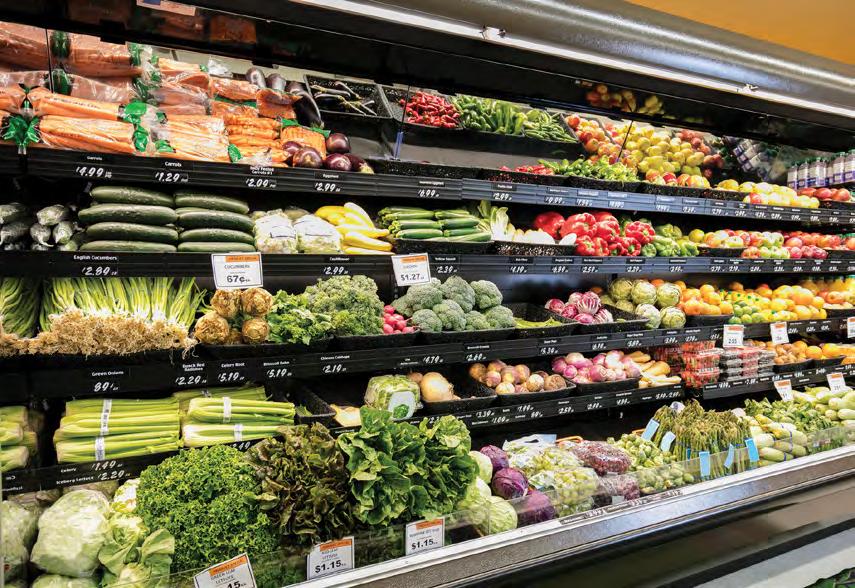

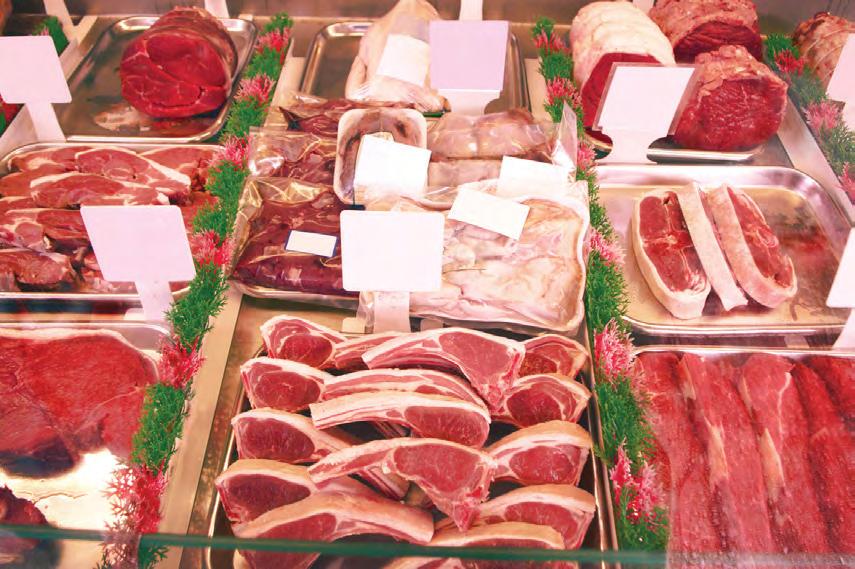









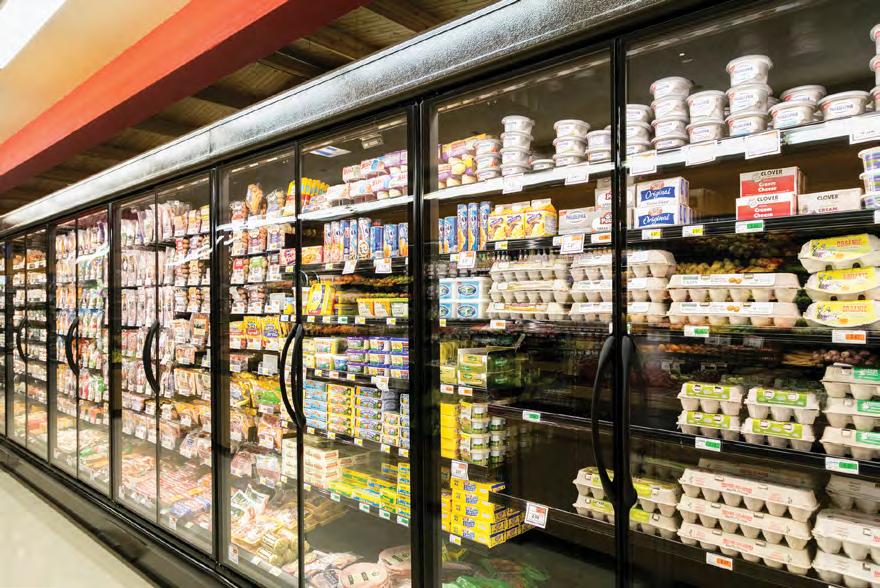





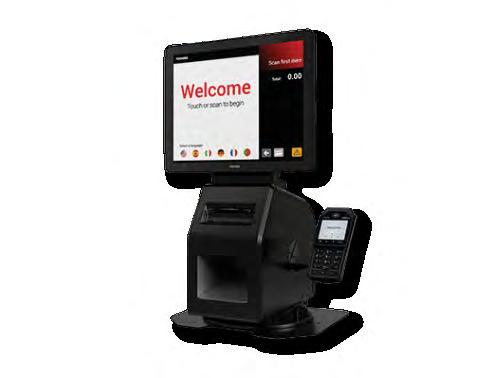

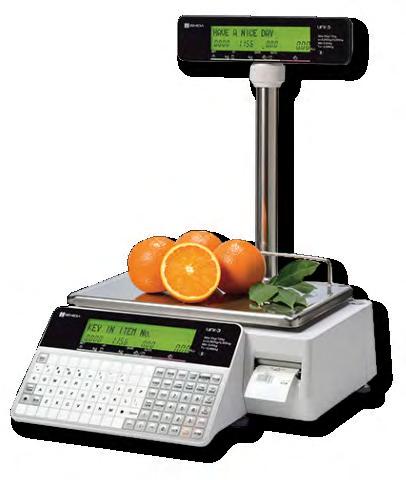



Pete Van Helden’s journey from a smalltown kid in Libby, Montana to the Chairman and CEO of Stater Bros. Markets is a testament to resilience, hard work, and an unwavering commitment to personal and professional growth.
Growing up in a large Catholic family of nine, he quickly learned the value of self-reliance, and the potential for success through hard work, and dedicated himself to being the best at whatever he did. He initially skipped college in favor of the School of Hard Knocks, which taught him so much and propelled him to the top job at Jewel-Osco in Chicago, managing a $7 billion company with only a high school diploma and a pilot’s license to his credits. Pete would later go on to embrace the value of higher education, to the point that encouraging others in their educational pursuits has become a cornerstone of his life’s work, inside and outside the industry. At the helm of Stater Bros. Charities, he’s spearheaded initiatives that have provided millions of dollars for education, military families, and community support programs. As a pilot, he channels his passion for flying into lifting others up— figuratively and literally—and believes that ultimately it’s not our careers that define us, but the impact we have on others.

As the middle child in a family of seven kids, Pete didn’t get a lot of attention. His dad was a postmaster, and while his mother was a stay-at-homemom, raising seven kids is more than a full-time job for anyone.

“My parents weren’t exactly helicopter parents—we were a Catholic home and they set some guidelines for behavior, but for the most part we all did our own thing,” Pete says. “I learned a lot of things ‘the hard way.’ When I made mistakes, they were all mine—no one else was to blame, and it was up to me to grow from that. I learned a lot of life lessons just doing it on my own.”



Pete’s is a story of how a man who grew up trained to look out for #1 instead became an industry leader known for his compassion, joy for serving others, and a tireless commitment to the advancement of the grocery industry.

That extended into being financially independent from the time he was in 8th grade. There wasn’t much money to go around, so if he wanted clothes that weren’t hand me downs, or a new bike, or skis, it was up to him to figure out how to earn the money and make it happen.
By the time he was taking classes at Libby High School, he was working two jobs, one as a caretaker at the Catholic church, and a second at the local A&W. He earned a whopping $1.50 an hour, most of which went into supporting his motorcycle habit. (He still loves motorcycles to this day, and has a small collection of bikes from his teen years that he maintains and rides.)
In 1976, when he turned 16, he got his first job in the grocery industry as a courtesy clerk at Rosauer’s Supermarket. At the time, a career in the grocery industry was not
even on the radar—Rosauer’s was just a good-paying gig that financed his lifestyle while he contemplated a future as an airline pilot.
“I don’t remember ever not having a passion about flying,” Pete says. “I got my pilot’s license when I was 19, and I have that same passion today as I did 50 years ago.”
He stayed at Rosauer’s through high school, graduating in 1978 and moved to Bozeman, Montana that same fall, after his girlfriend said she’d be going to school there. He parlayed his Rosauer’s experience into a job at Albertsons as a clerk. It was a 20-mile commute, but the money was good, and his family had moved to Manhattan, Montana so he was living at home.
That was when he decided not to go to college.
At Albertsons, he was surrounded by fellow employees who, for the most part, were using their income to pay for school. What really blew his mind, however, was they were working to get a degree that would lead to a job which paid the same as, or less then, a checker at the store.


He stayed at Albertsons another 19 years, rising to the rank of Vice President when he was only 37. Then in 1999, Albertsons merged with American Stores and he was asked to head to Jewel-Osco in Chicago, where they promoted him to President.
He was 40 years old, and had a unique sense of pride at how he’d come this far without a college degree.
“Something I learned early on, and which became foundational through my whole life, was that advancement comes from performance, and I was in complete control of that—I could make a difference in my life through my own actions,” Pete says. “I always saw that promotion was going to come from the group surrounding me, so I had to work harder and be better than my peers in whatever job I was doing. My mantra was ‘work your butt off, and you’ll get promoted.’”


He saw no sense in going to college and incurring all that debt just to get out four years later and make the same money he could be making as a checker in one year. For him, the money was in retail, and he decided to make his grocery job his career. He had bigger ideas than just being a checker, however. With his new ambition, he spoke with his store manager about his goals to move up in the company and got set on a path to success. By the time he was 21, he was an assistant manager and, a full-fledged store manager at 25.
While he reveled in the moment, realizing “he’d made it” to become the President of a large company without a degree, he still wanted to go further. That’s where his lack of a degree became an obstacle. The Vice President of HR told him any promotions beyond his current level would have to be board approved, and those position usually required a BA, if not an MBA or a PhD.

So he made a decision to go to school at last.
“There I was, 40 years old, running a $7 billion company, raising two daughters, and going to college,” Pete says. “It was 100% online, which in 1999 meant ‘dial-up modem.’ You can imagine what that was like.”
It was during those store manager years, specifically in 1987, that he was, “so desperate for a pharmacist,” that he hired one over the phone. Her name was Tanya, and he married her a year later. In those days, HR be damned.
He set himself to work, determined to apply the same ethic that had advanced him in his career to being successful in college. He graduated in 2005 with a BA in Business, and a 4.8 GPA. The timing was good. That same year, Albertsons CEO asked him to move to Southern California to be the CEO for the Northern and Southern California divisions. Pete accepted and spent a year in that role, working hard to consolidate the two California divisions. The day after Pete finished the consolidation, Albertsons went up for sale.
◀ Continued from page 35
The company was broken into three pieces. The drugstores went off in one direction, the “profitable” portion was sold to Supervalu in Minneapolis, and the rest was sold to Cerberus Capital Management. Pete joined the Supervalu team and at first stayed in California, where he oversaw 1,100 stores in the western US as Executive Vice President of Retail Operations.
“They let me stay in California, but I saw the writing on the wall—I was going to have to move to Minneapolis if I wanted to stay on the corporate team,” Pete says. “My daughters were both in high school then. Moving them from Southern California to Minneapolis was, and remains in their opinion, ‘not my best decision.’”
Career-wise, however, it was the right move. Things went fine for the next few years until 2011 when Supervalu hired a new CEO. Within a year Pete and the CEO weren’t seeing eye-to-eye. The C-Suite got populated with people who shared the CEO’s vision, and Pete felt like the odd man out.
“I knew my days were numbered, but fortunately Jack Brown, the owner of Stater Bros., had asked if I was interested in making a change,” Pete says. “I told him, ‘Yeah, I’m interested.”

Pete’s commitment and drive extends far beyond his own career. He spends as much, if not more, of his time making a difference in the lives of others, inside and outside of the grocery industry, as a volunteer and as CEO of Stater Bros. Charities.
“We hear the phrase, ‘It’s important to give back,’ but for Pete, those aren’t just words. He lives and breathes that philosophy,” says Mark Camarella, freshly-minted retiree from PepsiCo. “His level of service, even as busy as his job keeps him, opened my own eyes and ignited me to start giving back.”


Looking at what he’s done—and still does—to serve others, it’s almost impossible to parse out where Pete’s support of the grocery industry and its people ends, and where his personal philanthropy begins.


It took another year to work out the details—he started as President and COO of Stater Bros. Markets on Tax Day 2013, and was promoted to CEO three years later. Jack Brown became executive chairman of the board until he passed away in November 2016. Phil Smith came on as the new Chairman, and promoted Pete to Chairman two years later.
Today, Pete oversees 167 stores representing 18,300 employees and over $5 billion in annual sales. It’s testament to his commitment and drive to learn, work hard, and always have a goal for what’s next.
Since 2008, Stater Bros. Charities has provided more than $48 million to a variety of charities and causes, mostly focused on education. As one example, the organization supports the Western Association of Food Chains’ Retail Management Certificate Program. It’s an eight-course community college program designed to provide the skills and education for a management
role in the retail industry. Stater Bros. covers the cost of tuition, books, and fees for employees, but Pete went even further. He set a company policy that anyone who wanted a store manager position had to complete all eight courses to earn their certificate.
“It’s a great way to start an education journey, especially for folks like me who only have a high school diploma,” Pete says. “My goal is for folks to make a decision to get their college degree much sooner than I did.”
Stater Bros. also created and offers its own training courses at its headquarters, and Pete frequently visits those classes to share from his own experience.
(Notably, Pete didn’t stop with his own education after getting his bachelor’s degree. He went on to complete the Food Industry Executive Program at USC and then the Executive Business Program at Stanford University. Later, the USC Marshall School of Business named Pete the Executive of the Year for the Food Industry Management Program in 2018.)
All of that is just the warmup, however, as Pete’s passion for education goes well beyond the grocery industry. When Mark Camarella approached in him in 2017 about supporting Children of Fallen Patriots, which provides scholarships and counseling to military children who’ve lost a parent in the line of duty, Pete approved it on the spot. Since then Stater Bros. has provided more than $400,000 to the program.
Stater Bros. Charities also supports:

the community, and beautifully demonstrates how the success of a business and the success of a community can go hand in hand.”
Zac particularly recalls a time when Pete came to the classroom to share his personal experiences and serve as flight instructor for the day.
“We had kid named Ben who hadn’t shown much interest in the class until Pete arrived, and when it was over, Ben looked Pete in the eye, shook his hand, and said ‘thank you for coming,” Zac says. “Pete was so impressed by that—he later told Ben that when he turns 16, there would be a job at Stater Bros. Markets, if he wanted it. I have no doubt Ben will take him up on it. Pete changed a kid’s life that day. It still brings tears to my eyes.”

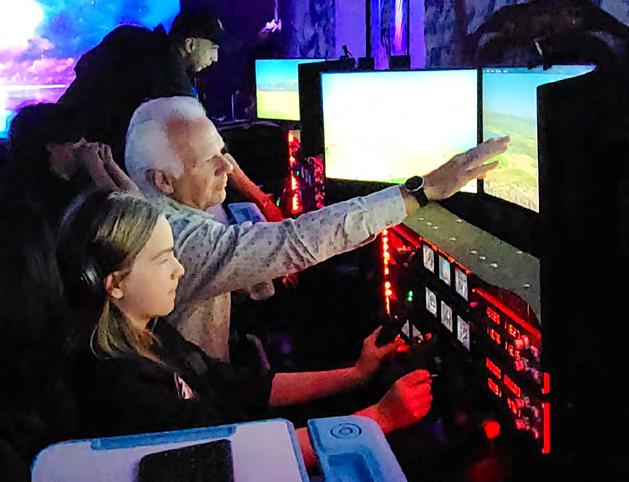
Pete doesn’t keep his love for flying to himself—he puts his pilot’s license and private plane to work. For years, he’s donated flying services to nonprofit organizations that fly people in need of medical care, like Angel Flight West and Veterans Air Command.

• The Taste and Teach program in partnership with the California Foundation for Agriculture in the Classroom.
• Inland Empire Lighthouse for the Blind, which teaches independent living skills and provides recreational outlets.
• Redlands Emergency Services Academy, which exposes high school students to careers in law enforcement and emergency fire services.
One additional nonprofit near and dear to Pete’s heart as a pilot is Youth Inspiration Nation, which promotes education through aviation. Students attend an eight-week program to learn about aviation through videos, STEM models, aviation games, and flight simulators.
“Stater Bros. Markets was the first organization to contribute to us in 2018,” says Zac Woonsam, founder and executive director of Youth Inspiration Nation. “Pete truly cares about the needs of

Outside of education, Pete is also a passionate advocate for the industry itself. Ron Fong, President and CEO of the California Grocers Association, often tells the story of how he and Pete worked together to stop a local city ordinance that sought to ban the sale of candy bars and soda at grocery check stands.
“Pete took issue because of the policy behind it—it was local government trying to tell our industry what we can or can’t sell, and if we agree to this, then what’s next?” Fong says. “He had a huge company to run, but we spent more than 100 hours fighting that, and we won. He’s a man of principle and if something isn’t right, he will fight it. I admire that about him.”
For his part, Pete is simply grateful he’s able to give back, and offers both an encouragement and challenge to all of us.
“We’re all put on this Earth for a purpose, and I think we’re all obligated to give back,” Pete says. “It’s not enough just to write a check. We all have passions and abilities, and using those is one of the best ways to serve. It makes giving back so much more real, and meaningful. Our mark on this world will be defined by what we did for others, and we can all do more. Me included.” ■
The “original” William and Mary—William III and Mary II of England—came to power in 1689. They have the unique distinction of being England’s first—and only—“joint sovereigns,” ruling together with equal status. Their accomplishments during their reign have had a lasting impact that endures to this day.
Willie and Mary Crocker, by comparison, may not be ancestral kings or queens, but there’s no denying that they’re akin to royalty in today’s grocery industry. In fact, similar to their namesakes, they have the unique distinction of being the only couple from separate companies ever simultaneously inducted into CGAEF’s Hall of Achievement.


As a package deal, they are so well known as “Willie and Mary,” that it’s almost impossible to discuss one without the other. If they were a Hollywood couple, they’d already have a combined nickname, like “WilMar” or “Millie.”
With or without the nickname (or royal titles), Willie and Mary Crocker are both recognized and beloved as an industry power couple. Both came from similar
backgrounds where they learned the values of hard work, showing respect and compassion for others, and the importance of giving back.
One is a would-be engineer, securities broker, and real-life explosive ordnance disposal technician. The other is a lifelong case study in recognizing the value in everyone. Each, in their own right, has earned the distinction of HOA induction. Willie, Director of Customer Teams for Bimbo Bakeries USA, and Mary, Sales Account Manager for Alta Dena Dairy, have dedicated decades to the industry, navigating challenges, building relationships, and always leading with integrity.
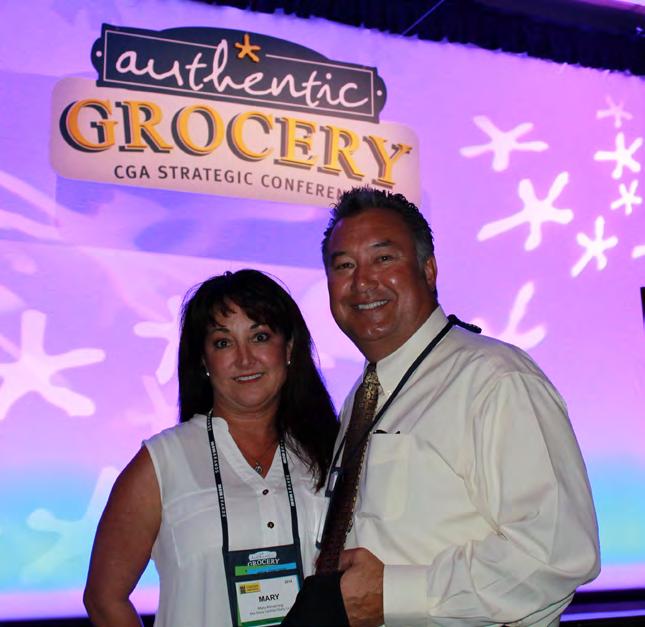

Together, they are an unstoppable force whose contributions extend far beyond boardrooms and industry events. Their passion for giving back, whether through scholarships, mentorship, or nonprofit work, has made them role models not only in their industry but in their community as a whole.
Together they exemplify what the Hall of Achievement celebrates, and their legacy is still being written.
Willie’s story begins in Japan where he was born in 1962 to a military family. The family moved to the U.S. when he was only a year old after his father was stationed in San Francisco. The Crockers eventually settled in San Diego where Willie spent his formative years alongside his younger sister, Vivian. His mother was a homemaker, something for which he was very grateful.
“It was so nice coming home and having a parent there,” Willie says. “There was safety and security in that, as well as accountability.
I learned a lot from my mom.”

His father, while remaining on active duty in the Navy, took on odd jobs after work and on the weekends—painting, construction, treefelling, and general handyman work. Willie came along as the “assistant”, even while he was only in grade school. Working with his dad, he learned how to install flooring, “sweat copper,” repair roofs and install sewer systems. Along the way he also helped his dad build their family home in Poway in 1974.
While in high school, he also worked with a landscape maintenance company that had contracts with new home developments and corporate business parks. It was good “outdoor” work that he enjoyed—it was hard to complain about cutting grass when all the job required was sitting on a riding mower for 7–8 hours a day.
He graduated from Poway High School in 1980 and after a short, self-described “failed attempt at community college,” he joined the Air Force in 1981 to take advantage of the GI Bill. There wasn’t any money for college, but getting a degree was a fixed goal in his mind—a means of getting that good-paying job someday.
“I walked into the recruiting office and after a short conversation with the recruiter, he pulled out a book and said he had just the job for me,” Willie says. “Explosive Ordnance Disposal.”
As a job category, it had the highest washout rate in the entire Air Force, but it came with a $2,500 signing bonus. To Willie in 1981, that was a fortune.

Money was tight—as a one-income family living on a Navy salary, even going to a fast food restaurant was considered a treat. Seeing how hard his father worked taught Willie about the value of a dollar, but even more importantly, it taught him the value of his time.
“The most important lesson I learned working with my dad was to study harder in school so I could get a good paying job that would allow some down time to enjoy life,” Willie says. “By the time I was in junior high and high school, I missed out on a lot of fun stuff with my friends because I needed to be out working with my dad.”

After Basic Training, he went to school for a year to be a bomb disposal technician. Then after a brief stint in Victorville, Willie shipped off to Ramstein Air Base in Germany, where he spent the next eight years. It was there he met an officer who changed his life: Captain Bruno Eddy.
“He came down to our flight one day and out of 20 guys, he pointed at me and said, ‘You don’t belong here. Starting tomorrow, you’re reporting to me on the staff. See you in the morning. Wear your Blues.’” Willie shares, “You have to understand I was just an E-5 noncommissioned officer. There are never E-5’s on staff. Those positions are all for senior enlisted men and women.”

To this day, Willie has no idea what it was about him that got Capt. Eddy’s attention, but on that first day, Willie knew his life was going to change forever. Capt. Eddy informed him, in no uncertain terms, that Willie was going to go to school, study, and get his degree while in the Air Force. He was going to take classes at night, in the morning and on weekends as needed, and in exchange he would be allowed to come into work late or leave early if classwork demanded it. Following that conversation, he marched Willie directly to the education center and got him enrolled.
“That was my life for the next 4–5 years,” Willie says. “I still don’t know what he saw in me, but he clearly saw something, and gave me an opportunity that was virtually unheard of. Because of that, I tell everyone who asks that I am who I am today because of, and owe my success to, Captain Bruno Eddy.”
◀ Continued from page 39
Mary Armstrong was born in 1964 in Phoenix, Arizona, but she calls Flagstaff her home. Her family moved there when she was four. Her dad worked in construction and her mom, like Willie’s, was a homemaker.
“I had an incredible childhood,” Mary says. “We lived on a ranch where I raised animals, was active in 4-H, worked hard, came home when it got dark, and even rode horses professionally.”

As the oldest of three sisters, she quickly became accustomed to responsibility and learned from an early age what it meant to be dedicated to something bigger than herself. In particular, her work with 4-H was about much more than taking care of animals. It was about serving her community, whether that was organizing food drives, helping with bake sales, or working on service projects.
Mary was involved in it all, which no doubt set the stage for her people skills and becoming the tireless volunteer she is today.
Her parents, like Willie’s, believed in hard work, honesty, and treating people with respect—values that would guide Mary throughout her life, even through a difficult time in 1977 when her parents divorced. Mary had to say goodbye to the ranch, and she moved to Glendale with her mother and sisters.
Life in Glendale was a bit of a culture shock compared to ranch living but Mary adapted by throwing herself into sports, drill team, and school activities. She learned to embrace change and find opportunities in new environments, a skill that would serve her well in her professional career.
While Willie was serving overseas, Mary graduated from Don Lugo High School in 1983. Until then she’d been working two jobs, one at a music store and one as a waitress at a seafood restaurant. There, she continued to hone her skills in hospitality and customer service.



Her first foray onto the grocery industry came right out of high school when she got a job at Price Club (now Costco).
“I was a ‘caller’ at checkout, which meant I’d call out the product numbers to the cashier helping with the checkout process. That was before electronic scanners made everything easier,”
Mary says. “I moved out of my mom’s house right after high school, and unfortunately, going to college was not something I had the opportunity to do.
I was always working two jobs, I was just trying to pay the rent. I wasn’t really thinking about the grocery industry as a career.”
She worked at Price Club for three years and then made a dramatic change. In 1986, she took a hospitality job working in the executive suites department at Angels Stadium where she got the opportunity to serve and manage the customer experience of VIPs ranging from celebrities and CEOs to Governors and even President George H.W. Bush.

Simultaneously, in 1987, she started a position in sales and purchasing for Reliance Steel/ Kilsby Roberts. Even at a young age, she recognized the power and value in real estate.

Coming to terms that college wasn’t a viable option, she focused on saving money and bought her own home in 1992. Few accomplishments could ever provide a better testimony to someone’s work ethic, selfdiscipline, or resourcefulness.

Of course, hard work is a bit easier when you really enjoy it. Mary so loved the job at Angels Stadium that she kept it for 26 years until 2011, even as she worked the second job at Reliance Steel (where she stayed until 1999).
Both of her jobs and volunteer experience added invaluable skills to her resume including community service, sales, and customer service. She would add those to the foundational values of working hard and treating others with respect instilled in her by her parents, and use them all to build the reputation she’s made for herself in the grocery industry today.
In 2005, Mary called a friend at Heartland Farms (now Alta Dena Dairy) and told her she was looking for a career. She asked if the friend could arrange for her to speak with her boss. That led to an interview, which led to a job. Today as a Sales Account Manager, she’s part of a great team, overseeing large retail accounts and managing customer relationships.
“I’ve been here 19 years, and I love this job so much,” Mary says.
“Every day, I get to use the lessons I learned in taking care of people and helping them feel special— not just to sell milk and dairy products, but to help put those staple, healthy products on the kitchen tables, pantries and stovetops of people all over the country. It’s so rewarding.”

Willie left the Air Force in 1990 after a nearly nine-year stint. He’s very proud of his time serving his country and honored to have done it, but he knew if he stayed in for 10 years, he’d feel compelled to go career, and that wasn’t part of his plan. He’d earned a degree in Industrial Technology and was ready to put it to work.
He was then, simultaneously, the beneficiary of great timing and the victim of bad timing. Toward the end of 1989, when he was ready to leave the Air Force, the Berlin Wall came down, Gorbachev stepped down, and suddenly the world seemed a little less dangerous. There was less need for a military force, so the military enacted a new policy allowing enlisted personnel to break their contracts. If you wanted out, and the base commander signed off, you were out within days. Willie jumped at the opportunity and was honorably discharged in January 1990.

Willie’s grocery industry career began when he was still in the Air Force. In the early 1980’s, while in Germany, he would occasionally take on the alter ego of “Snuggle Bear.”
“I had a friend that worked at WebCo, a food broker that represented all the commissaries in the European Theater, who asked me if I wanted to make a little extra money,” Willie says. “All I had to do was put on the Snuggle Bear costume—WebCo’s mascot—and walk around the commissary handing out lollipops to the kids. It paid $20 for a couple hours. Back then $20 bought lunch for a week, and it was easy money.”
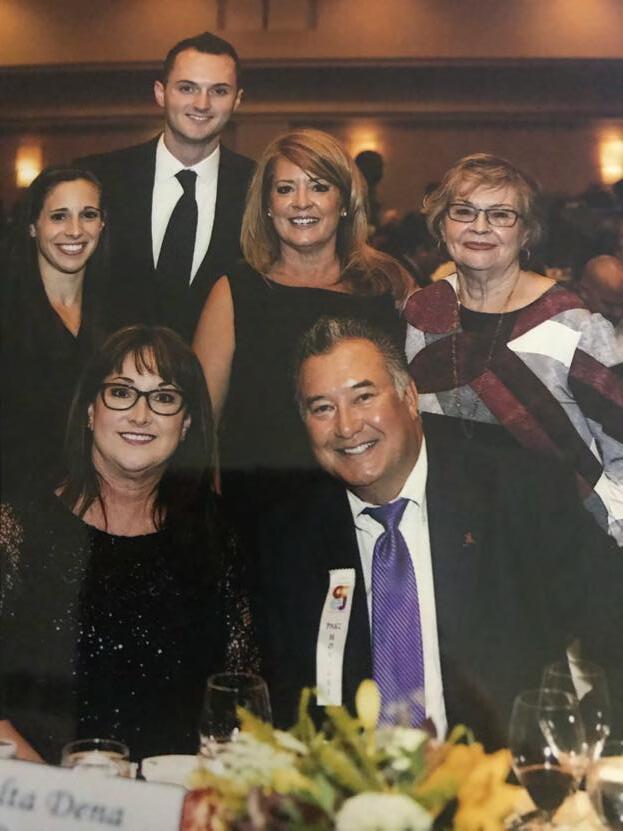
He moved to Seattle, a hub of the defense industry, expecting to launch a career but things didn’t go according to plan. He knocked on the door of every defense contractor in the region, only to be told that if he’d shown up three years earlier, he’d have had his pick of jobs. Instead, the same “less dangerous world” that had enabled him to leave the Air Force early had also slashed the budget of every defense contractor. Industrial engineers were a dime-a-dozen, and nobody needed one.
He quickly pivoted, deciding to make his fortune selling securities. He studied for and passed the Series 7 and Series 63 exams to sell securities and insurance in Washington. With those credentials in hand, he replied to a newspaper ad from a company called First Investors, and got the job.
The position was 100-percent cold calling. He was literally given the Seattle phone book and tasked with convincing residents to agree to a meeting with one of the company’s brokers. The job was also 100-percent commission based.
“The days turned into weeks without making any money, and I realized I was going to starve to death doing this,” Willie says. “That’s what prompted me to think about my friend in the food broker business back in Germany, so I made a list and started knocking on doors. One of those was at Lever Brothers.”
◀ Continued from page 41
Good timing smiled on Willie once more. When he showed up at Lever Brothers’ district sales office with his suit, briefcase, resume, and no appointment, the office receptionist was out to lunch. The district manager was the only person there, and when Willie asked if he could talk to him about a job, the manager said, “why not?”
At the time, Lever Brothers only hired from recruiters at college campuses, but Willie made enough of an impression for the district manager to make a call to one of his area managers. They started him on the Albertsons reset crew.
He was only on the reset crew for about three weeks when a sales position cropped up in Portland, Oregon, and the district manager opted to give Willie a “sink or swim” crack at it. From there, Willie’s career path unfolded as if it had been laid out for him all along.
He started as a sales rep working accounts with companies like Waremart (now WinCo) and United Grocers. He thrived, building a reputation for results and integrity, and after only a year, the company moved him to Los Angeles for a district sales technologist position.
“That’s what they called the position in the 90’s, back when it was a brand new thing,” Willie says.

Ask him what he values most about his job today, and he’ll tell you it’s the “people aspect.” Although he doesn’t call on customers anymore, the biggest part of his job is building and maintaining relationships with people, inside and outside the organization.
“Willie really believes in doing business the old fashioned way, and that is meeting with people,” says Ron Fong, president and CEO of the California Grocers Association. “I think it’s one of his biggest skills.”

As a side note on Willie’s career, it’s not lost on him that he got his start dressing up as a bear, and Bimbo’s mascot, Osito, is also a bear.
“In 35 years of grocery industry experience, I’ve gone from Snuggle Bear to Osito Bear,” Willie says. “It’s kind of poetic.”
Beyond just their career success, Willie and Mary also credit their relationship to the grocery industry. They first met at CGA’s annual conference and began dating in 2009.

“It involved looking at mountains of data and figuring out what it all means. Today they call it a sales analyst.”
From there he was promoted to sales assistant and not long after, the company merged with Chesebrough-Ponds and Helene Curtis under the Unilever Home & Personal Care brand. He remained there in various sales positions until 2004 when Unilever decided it would now handle all of its sales through brokers, and layoffs ensued.

He transitioned quickly, taking a job the with the Sara Lee Bakery Group as a customer sales executive. By 2008, he was overseeing a small sales team and when Bimbo Bakeries USA acquired Sara Lee in 2010, he was promoted to director of sales. Today, as Director of Customer Teams for Bimbo Bakeries, he oversees a team of nine and more than $120 million in annual sales.
“We both knew of each other, but that was the first time we really got to talking,” Mary says. “With bread and milk in our backgrounds, we just started talking about breakfast and how we could work together. We’ve been together ever since.”
They were married in 2014, to the surprise of no one.
“I’ve known Willie and Mary for 20 years—I knew them both independently before they were married and when
I found out they were engaged, it suddenly seemed so obvious,” says Pat Posey, COO of the Western Association of Food Chains. “Talk about a match made in Heaven—I can believe it didn’t occur to me to orchestrate their meeting years earlier.”
Mary changed her last name to Crocker and they cemented not only a personal union, but also an unstoppable professional partnership that would benefit the industry in innumerable ways.
“The two of them really are a power couple,” Fong says. “Whenever I think of Willie or Mary they just come up as a pair. Individually and together, they both bring a great deal of trust, honor and respect to the industry. When either of them gives you their word, it’s gospel. That kind of trust is so important in this industry. I really admire and appreciate both of them for that.”
Willie served on the CGA Board of Directors for seven years from 2016–2022, providing invaluable insights to the Association’s leadership on the “supplier side” of the community.
Subriana Pierce, Senior Vice President of Sales for C.A. Fortune, has seen firsthand the depth of his commitment.


The shared contributions of Willie and Mary inside and outside the grocery industry are all but innumerable. For more than a decade, both have been heavily involved in The Illuminators, a nonprofit organization founded in 1928 that is dedicated to the success of the CGA and the WAFC conventions, and providing scholarships to the children of The Illuminators, CGA and WAFC members. Last year alone, the organization raised more than $150,000 for scholarships.
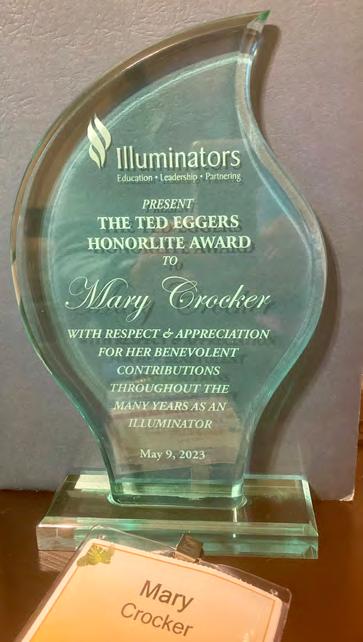


“It’s his presence— he shows up for this industry in a big way, and he brings his company along so it can continue the work he’s done,” Pierce says. “Serving with Mary and Willie on The Illuminators Board and the CGA Board with Willie, I’ve seen firsthand how they have modeled what it means to be servant leaders. Their example has helped me be more effective in my role and in making sure my husband, Allen, is leading beside me. They laid the blueprint for a power couple in this industry.”
For Mary, this work has had a personal as well as a professional attachment.
“As someone who wasn’t able to go to college myself, I wanted to help others with their education,” Mary says. “I know very well how getting a college education can be a financial burden, to whole families, so that’s where I wanted to help.”
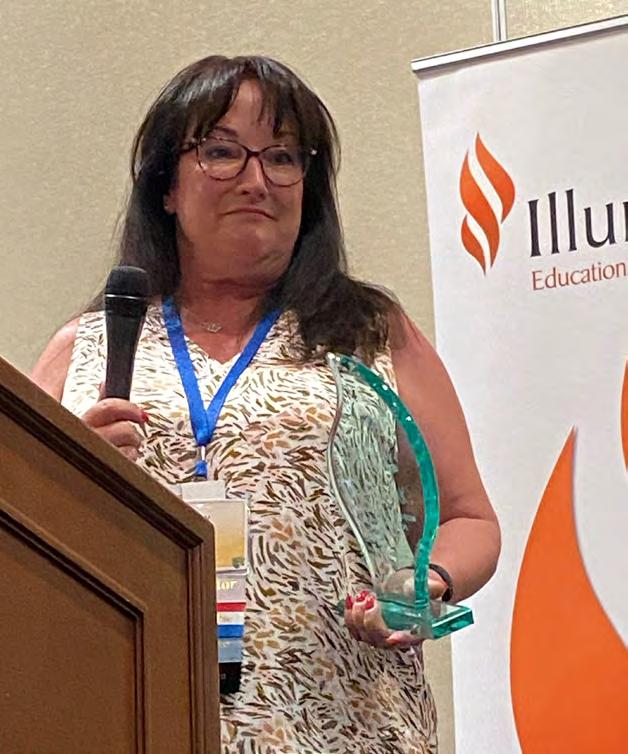
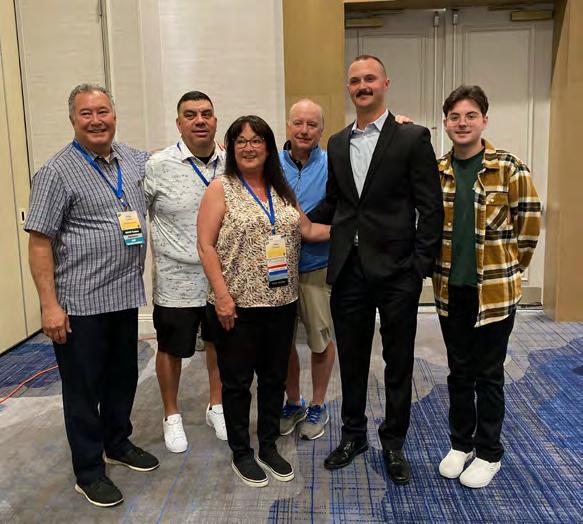
Mary’s work on behalf of The Illuminators has been so impactful and valued that, in 2023, she was recognized with the organization’s Ted Eggers “Honorlite” Award.
“To put that in perspective, you need to understand than in almost a century of existence, The Illuminators have only named 36 Honorlite Award winners,” says Dave Grosse, Vice President of Sales for the Performance Group. “It’s The Illuminators’ highest honor. When Mary won it, it was a huge surprise to her, but to none of us in the room. It was a highlight of her career and yet she was so humble and grateful to accept the award. I still get goosebumps thinking about that moment.”
Their work with The Illuminators is just the start. Together they are also deeply committed to supporting the work of City of Hope, the Cystic Fibrosis Foundation, Boy Scouts, Olive Crest, their church, and more. They also do more than serve on committees and make decisions. When opportunities come around, you can find them feeding the homeless, taking a shift at a ticket booth, putting up decorations, cleaning up afterwards, and truly being involved in the work.
“Mary and Willie are really the perfect choices for the Hall of Achievement,” Posey says. “They both make time for everyone else—when they’re in the room, they make everyone feel special. Willie’s heart is the biggest muscle in his body. Mary’s answer to any need is always ‘yes’. Where you find one, you’ll always find the other. Willie and Mary are a package deal, ready to roll up their sleeves and help any way they can.”

For their part, Mary and Willie maintain a very genuine modesty.
“Serving others is where our hearts are and I’m so proud that our children serve as well,” Mary says. “As grateful as we are, it’s not about the awards, it’s about the lives we touch. Dr Seuss said it best, ‘To the world, you may be one person, but to one person, you may be the world.’”
There’s little doubt that Willie and Mary are “the world” to more than one person, to more than each other, and perhaps even to more than the whole grocery industry.
“The light these two bring into a room, and the love they have for each other is so obvious,” Grosse says. “They share that same love to this industry. And the industry loves them back.” ■
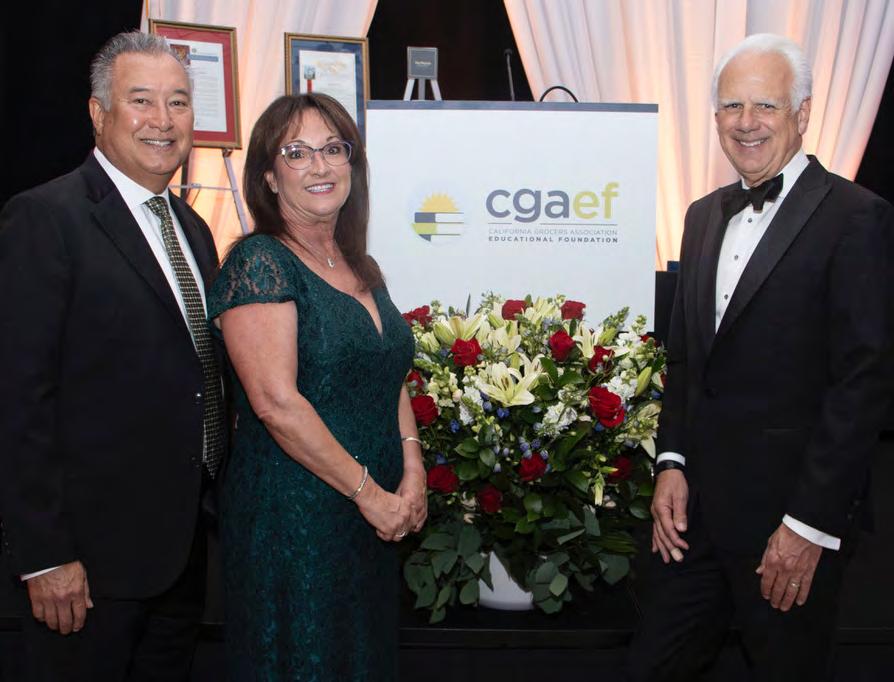
The California Grocers Association Educational Foundation (CGAEF) inducted Pete Van Helden, Chairman and CEO of Stater Bros. Markets, Mary Crocker, sales account manager for Alta Dena Dairy, and Willie Crocker, retail director for Bimbo Bakeries USA, into the prestigious Hall of Achievement on Thursday, April 10, 2025 in Anaheim, California.
In addition to honoring three industry legends, the awards gala raised more than $639,000 to help fund the Foundation’s signature college scholarship and tuition reimbursement programs to support future grocery industry leaders in their pursuit of higher education. With these latest
contributions, the Foundation has secured $907,500 in scholarship commitments this year, bringing its total lifetime scholarship disbursement to approximately $11 million. The Foundation is offering more than 420 college scholarship opportunities to industry members and their dependents in 2025.
Through their commitments to service and education, Pete, Mary, and Willie each embody the tenets of the Hall of Achievement award. After building a successful career in the grocery industry, Pete returned to school at the age of 40 to pave a path for further advancement.
Today, he leads Stater Bros. Markets’ charitable arm, Stater Bros. Charities, which has provided $48 million to charities and causes. Willie earned his degree during his nine years of service in the United States Air Force. Together, Mary and Willie have been heavily involved in expanding education opportunities for the grocery industry through The Illuminators, and have supported charitable causes including City of Hope, the Cystic Fibrosis Foundation, Boy Scouts, and Olive Crest.
At this year’s awards gala the Foundation presented the first-ever CGA Rising Stars awards to recognize burgeoning industry talent. Recipients included Teresa Blanco, Northgate González Market; Taylor Chappell, Anheuser-Busch; Dominic Olvera, Stater Bros. Markets; Joanna Perez, C&S Wholesale Grocers; Priyanka Vijay, Keurig Dr. Pepper; and Chad Villanueva, The Save Mart Companies. Recipient of CGAEF’s sixth annual $10,000 Legends of the Industry Scholarship, Jessica Jimenez, Gelson’s Markets, gave remarks during the event to share how the industry’s support will help her fulfill her education and career ambitions.
The Hall of Achievement recognizes grocery leaders for their tremendous contributions to the grocery industry and within their local communities. ■



In late April the grocery community came together in Sacramento to advocate for the industry. More than 70 grocers participated in 40 legislative meetings with lawmakers and staff to tell their stories about how proposed legislation would impact their business. Priorities for the day included self-checkout, gift cards, shopping carts, food access, and swipe fees.
During our morning program leading reporters from the Capitol Press Corps, Ashley Zavala, KCRA 3, Alexei Koseff, CalMatters, and Dustin Gardiner, Politico, joined for a Media Matters panel discussion. New legislative members Asm. Alexandra Macedo and Asm. Mark Gonzalez joined for a “Meet the Freshmen” panel. And finally, veteran lawmakers Asm. Heath Flora and Asm. Liz Ortega provided insights on what they’re seeing at the Capitol.
After a productive day at the Capitol, lawmakers met us back at CGA headquarters to mix and mingle with the grocery community. The highlight of the evening was the second annual Legislative Bag-off Competition, judged by national best bagging champion from Nugget Markets. Competitors included Asm. Juan Alanis, Asm. Alexandra Macedo, Asm. Blanca Pacheco, and Asm. Jose Solache. Asm. Alexandra Macedo took home first place. ■

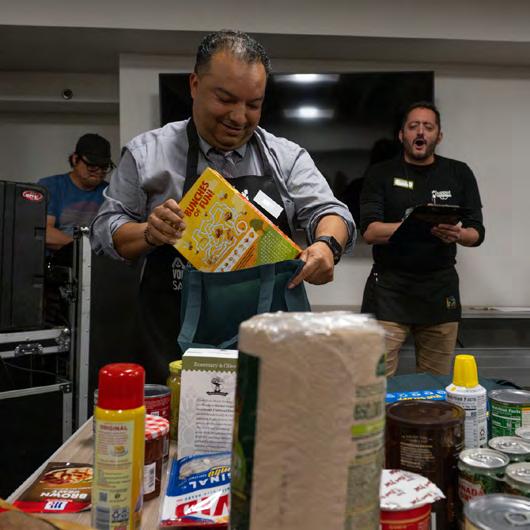
To kick off summer, the CGA Independent Operators Committee hosted the inaugural Independent Grocers Bocce Ball Tournament on Tuesday, June 3.
Nearly 100 independent operators and suppliers met in San Rafael for a laid-back day of networking, connection, and fun on the bocce court. Attendees enjoyed tasty bites and refreshments provided by our generous event sponsors. ■


Being a member of the California Grocers Association has significantly impacted my connections within the state’s grocery industry. CGA has enabled me to deepen relationships with many grocers across California, enhancing both professional and personal ties. This vibrant community understands the state’s unique market dynamics and ensures the success of its members. Through advocacy and initiatives tailored to California’s diverse needs, CGA strengthens the industry, and I am proud to be part of such a crucial organization.



CGA welcomes the following members:
Circular CRV Association
1005 12th St Lower Level Sacramento, CA 95814
Contact: Brian Phillips, Executive Director
E-mail: brian@circularcrv.com
Phone: (818) 817-6367
Website: circularcrv.com

Inmar Intelligence
1 W 4th St Ste 500
Winston Salem, NC 27101-3971
Contact: Kathy Hayden, Senior VP, Strategic Partnerships | Martech Division
E-mail: kathy.hayden@inmar.com
Phone: (301) 741-3183
Website: inmar.com/solutions/martech/ retailers
Commentsell
470 Ramona St
Palo Alto, CA 94301-1707
Contact: Rikard Jakobsson, Head of Sales
E-mail: rikard@commentsell.com
Phone: (404) 507-6824
Website: commentsell.com
La Cabana Food Distributing Inc.
649 Benet Rd
Oceanside, CA 92058-1208
Contact: Ivan Gonzalez, Chief Executive Officer
E-mail: ivangonzalez@lacabanafood.com
Phone: (442) 615-4293
Website: cabanafoods.com

Pace-O-Matic
3450 Corporate Way
Duluth, GA 30096
Contact: Michael Barley, Chief Public Affairs Officer
E-mail: michael.barley@paceomatic.com
Phone: (770) 441-9500
Website: paceomatic.com

Republic Amusements
5655 Gray St
Arvada, CO 80002-2821
Contact: Michael Winton, Vice President
E-mail: michaelw@republicamusements.com
Phone: (903) 309-1470
Website: republicamusements.com

r4 Technologies, Inc.
38C Grove St 2nd Floor Ridgefield, CT 06877
Contact: Matthew Breitenbach, Chief Operating Officer
E-mail: mbreitenbach@r4.ai
Phone: (203) 461-7103
Website: r4.ai

Sushi Avenue
895 Blue Gentian Rd Ste 6 Eagan, MN 55121-1570
Contact: Shingo Fujii, President/CEO
E-mail: sfujii@sushiavenue.com
Phone: (651) 294-7000
Website: sushiavenue.com

Fintech
3109 W Dr Martin Luther King Jr Blvd Tampa, FL 33607-6231
Contact: Misha Hart, VP, Marketing
E-mail: mhart@fintech.com
Phone: (813) 288-1980
Website: fintech.com

Local Express
600 N Brand Blvd Ste 620
Glendale, CA 91203-4215
Contact: Maria Gallegos, Chief Marketing Officer
E-mail: mariag@localexpress.io
Phone: (818) 405-9777
Website: localexpress.io

RATIONAL Cooking Systems, Inc.
1701 Golf Rd Ste C-120 Commercium Rolling Meadows, IL 60008-4227
Contact: Rhonda Heflin, Regional Sales Manager, Nor Cal & Northern Nevada
E-mail: r.heflin@rational-online.com
Phone: (530) 687-6952
Website: rational-online.com

Valley Inventory Service
1180 Horizon Dr Ste B Fairfield, CA 94533-1693
Contact: Amby Nair, President
E-mail: amby@valleycount.com
Phone: (707) 422-6050
Website: valleycount.com

BY GRACE BECKER

Fluffy, miniature, and toothy...these are the characteristics of the beloved Labubu figures that are flying off store shelves. Shoppers are adorning their bags and purses with the collectable plush miniatures. Part of their viral appeal is the fact that they’re mostly sold in “blind boxes” that allow customers the element of surprise and encourage them to collect more. Labubus’ virality goes hand in hand with the popularity of Popmart, the Chinese retailer behind the product, known for other blind boxes and figurines.
According to Modern Retail, retailers are moving past traditional AI agents and onto agentic AI. As opposed to generative AI, agentic AI bots will have the ability to autonomously complete tasks without inputs and minimal human intervention. Agentic AI is expected to become the standard for online shopping, but is still years away from understanding shoppers’ search and discovery habits. Forrester’s recent report on agentic AI said that “systems are poised to not only become the backbone of the knowledge economy but will completely redefine how organizations operate and compete.”



Direct-to-consumer brands that now operate brick-and-mortar storefronts are rethinking the checkout line and traditional store format. Millennial-favorite beauty brand Glossier, for example, displays products on tables instead of shelves to encourage customers to test and interact with products. Instead of a “cash wrap” or checkout lane, Glossier associates use mobile point-of-sale systems to check out customers wherever they are in the store. This format encourages a sense of community, self-direction, and play, according to general manager of retail Emily Lewis.

Target is the first major food retailer in the U.S. to commission a line of sustainable wines in low-carbon paper bottles. The Collective Good wine range is bottled in the Frugal Bottle from packaging company Frugalpac. It’s made from 94% recycled paperboard with a food-grade, certified recyclable pouch to hold the liquid. According to Frugalpac, the Frugal Bottle is five times lighter than a glass bottle and uses six times less carbon and energy to produce and dispose. The Collective Good range is a collaboration between Danville, Calif.-based Latitude Wines and Monterey Wine Co.
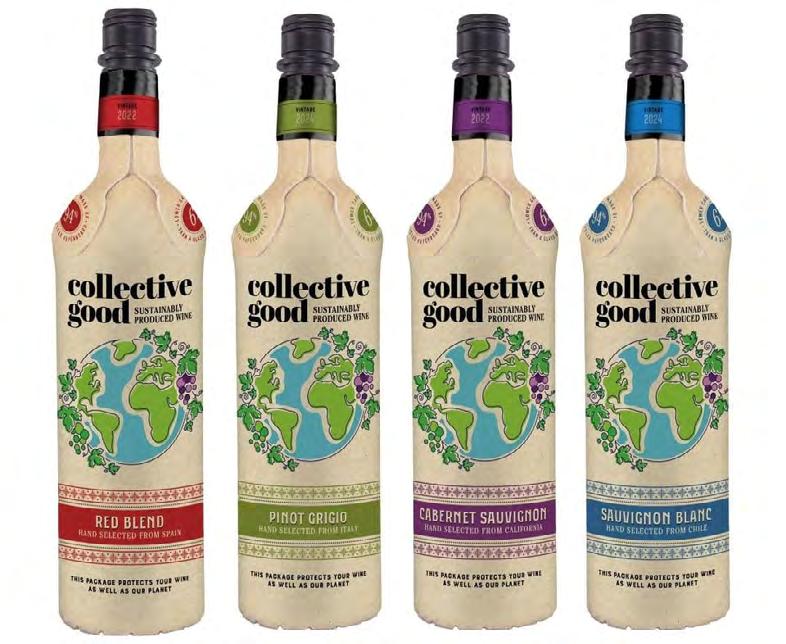
Friend of CGA and Founder and Editor of The New Consumer Dan Frommer released the Consumer Trends Food Feelings Matrix to gauge how healthy consumers consider certain foods and how happy they feel consuming them. Among the highest happiness scores include chocolate, steak, pizza, ice cream, and, most of all, grapes. While most food and beverages on the matrix make people at least a little happy to consume on average, non-alcoholic canned cocktails, plant-based-meat burgers, non-alcoholic beer, diet soda, and caviar received a negative happiness score overall.



Mitts is an ergonomic sponge designed to clean your most delicate glassware and fine kitchen tools. Founded by a wine-loving couple who was tired of breaking expensive glassware when washing, Mitts is like a second hand for your sink. Its design is sleek and practical, and it even comes with a base to store the Mitt when not in use. It’s made to fit any hand and its cut matches the length of the average wine glass’ bowl. All you do is circle the rim of the glass, swirl the bowl, and swipe the base.


Makers of authentic, traditional products for the Hispanic market.

Traditional Tamales made from scratch, by hand with stone- ground corn.


Molcajete Salsas with authentic and traditional flavors, with no preservatives and great margins for retailers.
www.donpedrosmeat.com | ph. (626) 339-3963
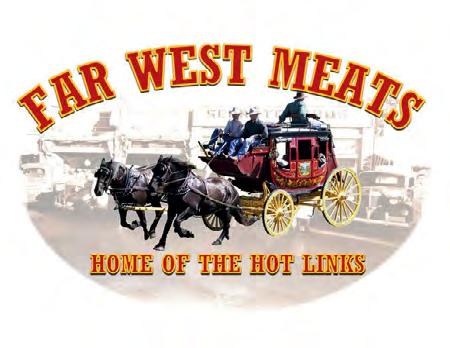
100 year old brand making Traditional Smoked Sausages and meats.

* 60% gross margin for retailers * $400K average sale per store
www.cornmaidenfoods.com | ph. (310) 784-0400




Kielbasa, Andouille, Louisiana Style, Hot Links, Chicken Links
Trusted Co-packer of high quality sausage by great brands

ph. (909) 571-5522











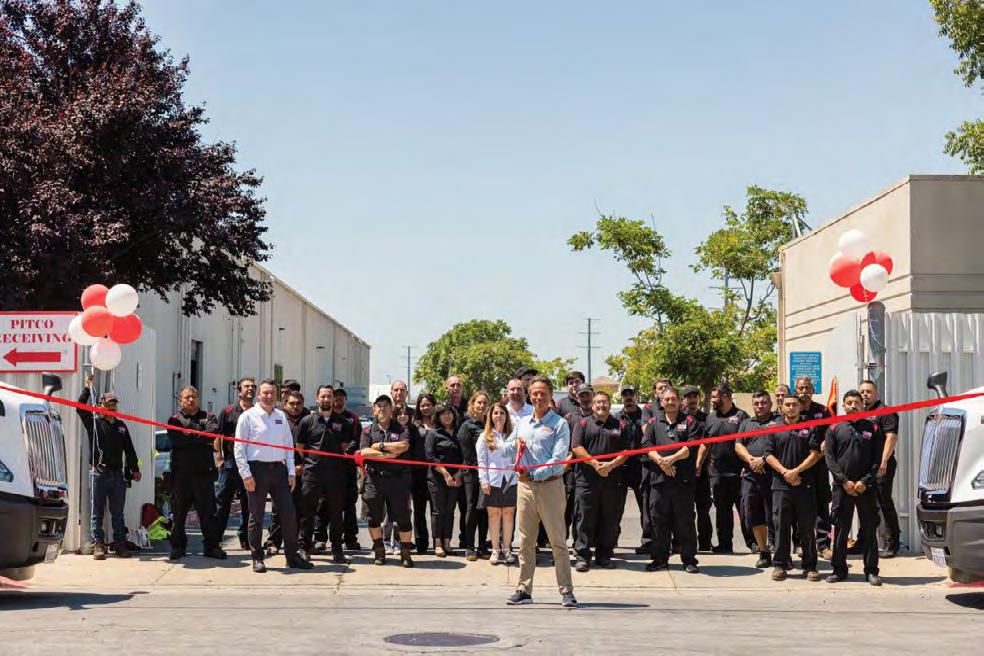


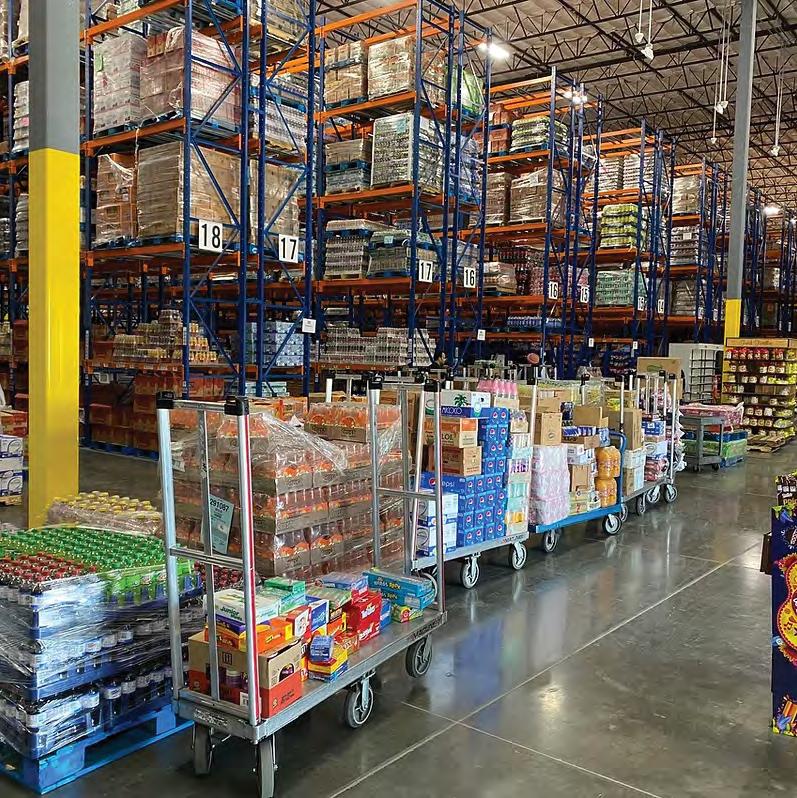






















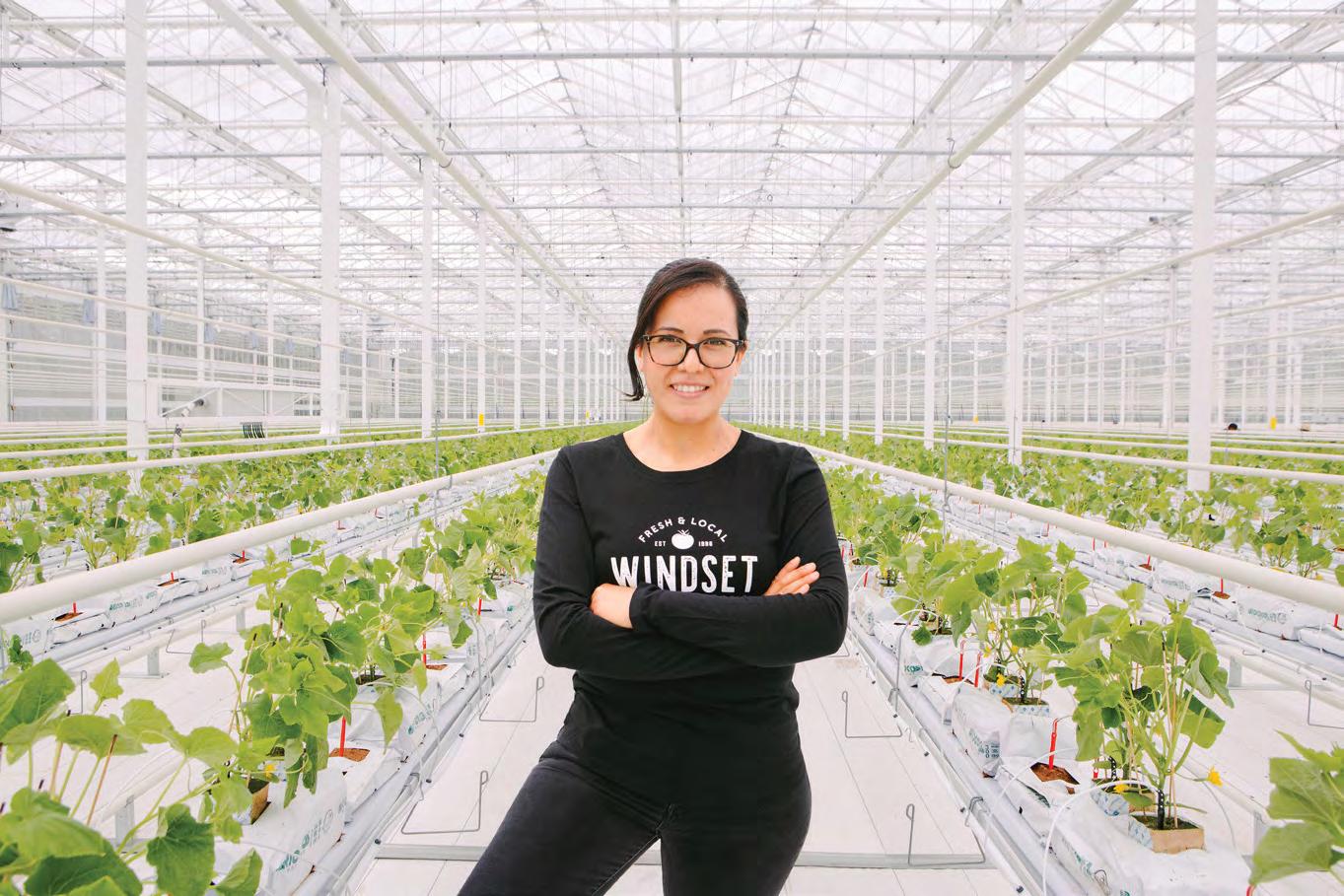











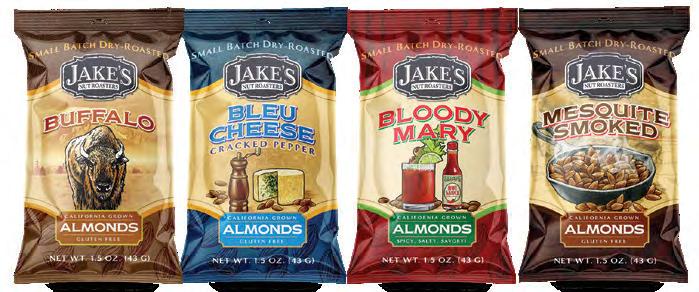



























































KIMBERLY RAE MILLER WRITER
Last week, I spent $246 at the grocery store. I walked out with two paper bags and a sinking feeling I’ve come to know too well: I still don’t have what I need to feed my family for the week.
Prices keep rising, but family income? At best, it’s staying the same. That gap between what we earn and what we spend is getting harder to bridge. I now find myself comparing the school lunch calendar to what I could pack from home—not to make a healthier choice, but to figure out if I can feed my child for less than the federally subsidized rate.
Moms like me—who manage the food, the finances and the feelings—are having to rethink everything. We’ve already cut the extras. No more spontaneous weekends away. No season passes to the local amusement park. Even eating out has become a rarity. But groceries? We can’t cut those. Feeding our families isn’t optional. It’s the one line in the budget that’s nearly impossible to trim.
And yet, we’re trying. We’re trading down to store brands. We’re shopping sales, using apps, freezing more, and cooking simpler.
But too often, even after all that effort, there’s still a sense of defeat. The meals are less satisfying. The snacks are fewer. And the stress is higher.
Here’s what I wish grocers understood. First, we need transparency. We know prices are rising, but unclear shelf tags, inconsistent unit pricing, and sudden cost jumps create distrust. Honest communication builds confidence. Show us what’s going up and why—and what you’re doing to help us cope.
Second, give us tools that help us stretch. Feature bundled meal deals for families of four. Promote shelfstable staples and smart, affordable swaps.
Even better, build trust with simple signage: “Feed your family five dinners for under $30.” We’re not just looking for savings—we’re looking for a partner in this.
Finally, recognize that grocery stores have become emotional ground zero for many families. When so much else is unstable—jobs, schools, even the weather— we need to count on you.
Shopping shouldn’t feel like a losing battle. It should feel like one thing that still works.
Grocers who show empathy, offer real value and help us feed our families with dignity will earn our trust—and our business—for the long haul. ■
For veterans living with PTSD, service dogs can provide a lifeline.
By Joe Toscano, Vice President, Trade & Industry Development at Purina
The statistics are sobering: up to 30% of military veterans live with Post-Traumatic Stress Disorder (PTSD), yet only a fraction have access to the life-changing support of a trained service dog. With service dog training costs reaching upwards of $25,000 per dog and wait times often exceeding 18 months, many of our veterans are left without this vital resource that could help them reclaim their lives.
That’s why Purina Dog Chow created the Service Dog Salute program in 2018, which has contributed approximately $1.4 million to veteran service dog training organizations since its founding, and more than 30 grants to 501c3 service dog organizations. Our initiative helps fund the intensive training required to prepare these exceptional animals to support veterans living with PTSD.
The impact of a service dog on a veteran’s life cannot be overstated. These highly-trained companions can recognize signs of anxiety or distress, provide calming pressure during stressful situations, and help veterans navigate daily challenges with greater confidence. Many veterans report significant improvements in their quality of life, relationships, and ability to participate in community activities after being paired with a service dog.
“I started getting better,” U.S. veteran Jonathan Lucas describes of his service dog, Savannah. “I’m no

longer hiding from society. I can go back to concerts. I can be around crowds. And [Savannah] brought me to this point, where I can be around all environments. She brought me back to the world.”
Our commitment to this cause runs deep. Beyond our financial contributions, we’ve launched nationwide awareness campaigns, partnered with veteran advocacy groups, and worked closely with service dog training organizations to understand and address the challenges they face.
Jonathan and Savannah’s story and more were recently featured in the 2024 New York Dog Film Festival, as part of the Dog Chow Service Dog Salute category’s winning film, A Dog Can Make a Difference.

For retailers, supporting the Service Dog Salute program represents both a business opportunity and a chance to make a meaningful difference. Our dedicated merchandise units create compelling in-store displays that resonate with shoppers. More importantly, by featuring Service Dog Salute displays, retailers help raise awareness about the critical need for service dogs among our veteran community.
To learn more about how you can support the Service Dog Salute program, contact your Purina sales representative. Together, we can help provide more veterans with the life-changing support of a trained service dog while driving category growth in your pet food aisle.
Read California Grocer on your mobile device, or share with an associate. cagrocers.com








